







The Ely Summer and Winter Times is published twice a year by Raven Words Press. For editorial information or advertising rates, contact us at 218-365-3375 or raven@ravenwords.com. For a subscription within the US, send check or money order for $10.00
© Marco Jovanovic
for a year or $50 for a lifetime, or order at our website, www.RavenWordsPress.com. Archived issues can be found there and at issuu.com. We also publish the Boundary Waters & Quetico Calendar, available at RavenWordsPress.com.

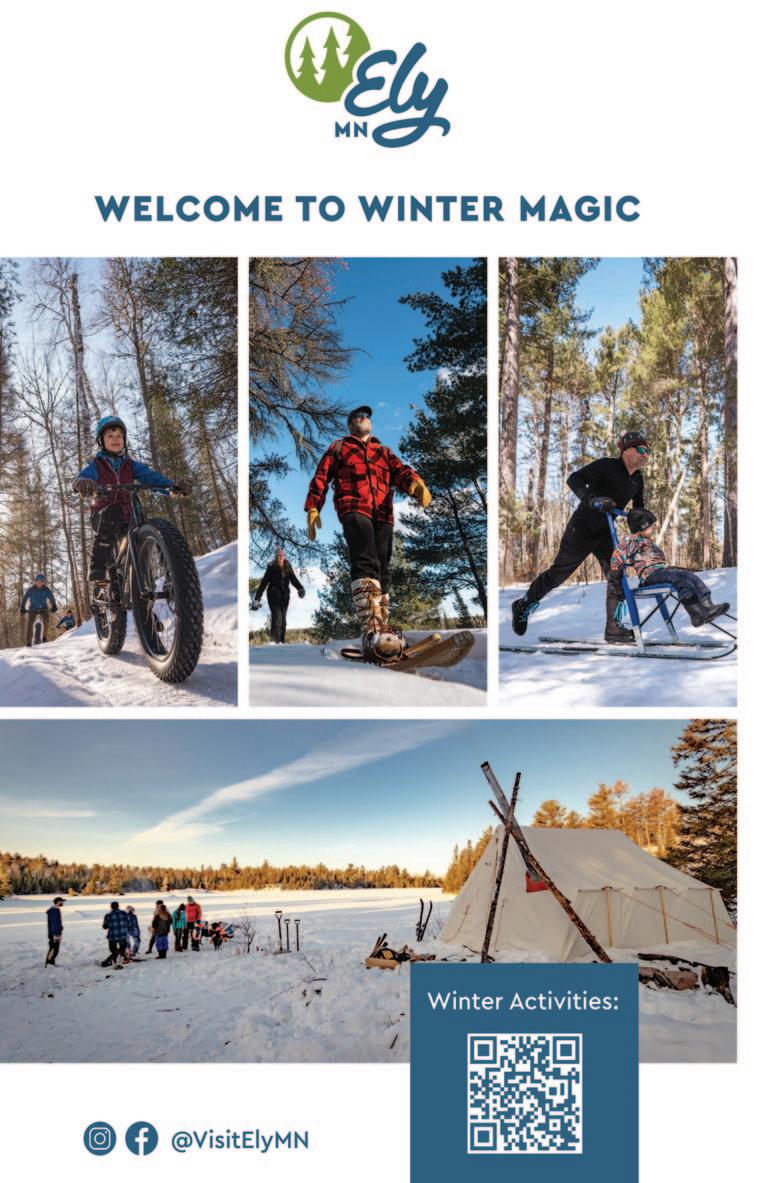

© Heidi Pinkerton
Lynx research in Superior National Forest may have created more questions than answers, although certainly some valuable data has been collected. That was the conclusion drawn by Steve Voiles when he wrote about the Ely area lynx population in the 2014 Ely Winter Times, At that time biologists were studying DNA samples to determine if there was a robust reproductive population in Minnesota. And although lynx were an almost common sight around Ely for that one winter, no one knew if it was due to a sudden irruption of the species from Canada or signs of a more permanent population inhabiting our north woods. Ely residents thought that seeing a lynx in the woods around here could be a once-in-a-lifetime experience.
For the ten years since Steve’s article, lynx sightings, though not common, have
not exactly been rare. Lake County has the densest population of lynx in Minnesota, with Cook and St. Louis not far behind. Both state and federal programs have answered many questions since 2014, although as often happens with high quality research, the studies have revealed further mysteries. The surveys have recorded verified sightings, tracks, scat, and hair, and DNA testing has identified approximately 600 individuals and more than 80 geneticallyrelated groups (families if you will) living in the Arrowhead region in the past 20 years. Undoubtedly there are more, as it is easier for researchers to learn about animals that live closer to roads rather than deep in the Wilderness Area.
We now know that lynx reproduce successfully here and that the population is increasing. We know they occasionally


hybridize with bobcats through female lynx-male bobcat matings. (So far there have not been records of these hybrids reproducing.) We also know that, as a threatened species, their prevalence doesn’t indicate permanence. At the southern edge of their range in Minnesota, lynx are vulnerable to the effects of climate change. Their primary food source, snowshoe hares, may also be vulnerable because their white pelage persists when spring snow melt comes early, as it may do more often in coming years. Research so far has not been able to detect if the white hares are aware that they stand out against the brown ground, although preliminary studies suggest they don’t change their behavior when their camouflage betrays them. Lynx

Did we mention BIG feet?!
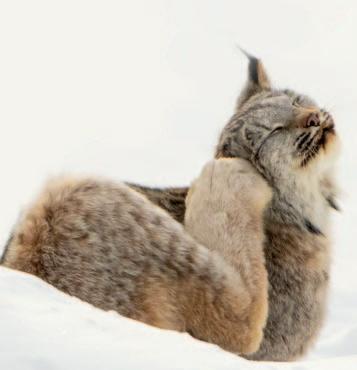
may have an easier time finding a meal in the short term, but a reduction of the hare population would be detrimental in the long term.
Observation has shown that lynx, once considered elusive, are not much troubled by the presence of humans, and will often continue whatever they are doing while thrilled human onlookers pass around binoculars or even get close enough not to need them.
Bobcats and lynx can be difficult to tell apart with only a brief glimpse, but a clear look can provide the clues needed to know what species you are seeing (unless it’s a hybrid, which can be confusing). Bobcats generally have some spots while lynx have a mottled coat. Lynx have long sideburn-like fur under

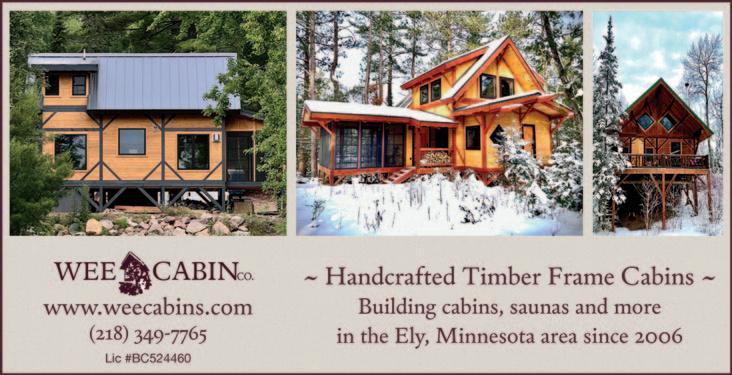
their chins while bobcats appear more clean-shaven. The huge feet of the lynx are distinctive and make tracks that can differentiate them from other animals. The tracks are as large as a big wolf or a cougar, but lynx tracks are shallow because the animals weigh only 15-35 pounds whereas wolves and cougars are generally over 100 pounds and sink deeper into the snow. In soft snow, the fur between the lynx’s toes leaves a blurry track rather than the crisp deep imprint of heavier animals.
Cougars?! Did you mention cougars? Around Ely?! Yes, cougars (also known as mountain lions and pumas) have been sighted here, but verified cases are rare. The DNR reports that only 77 sightings have been verified in the state in the past 20 years, and some of those were
undoubtedly the same animal. A recent increase in sightings is most likely due to the popularity of trail cams, which are much more prevalent than a few years ago. Cougars tend to avoid people, so even in California where there is a robust population, there are relatively few sightings and far fewer confrontations.
The long tail, larger body, and sleeker coat distinguish a cougar from a lynx. A cougar’s tail is rope-like and nearly as long as the body, which is 4-6 feet in length compared to 2.5-3.5 for a lynx.
Bobcats also are shy of humans and so are seldom seen even though they may be fairly common. They look more like a housecat than lynx do, with a less furry face, smaller feet, and a tail tip that is black only on the top.
The most likely way to see a lynx in

This image of a young lynx shows the key identifying characteristics: long ear tufts, short black-tipped tail, huge paws.

this area is to travel along Forest Service roads off of Highway 1. Wherever you find an abundance of snowshoe hare tracks is a good place to start checking for lynx tracks. Mixed conifer and hardwood forests that are in mid succession provide good shelter and food for hares, and so are frequented by lynx. Forests with plenty of large woody debris and fallen logs make ideal den sites. Kits are born in early summer and remain with their mothers until the next spring, so you have a good chance of seeing them if you find the mother.
Lynx have few natural predators, although a wolf or coyote might kill a lynx that they catch in the open. Humans are the primary cause of mortality. Being hit by cars or trains and being trapped inadvertently are the most common

This napping lynx ignored the photographer.
means of an early demise. In the study of lynx in this region, several individuals have been reported in six consecutive years. Lynx are known to live 14 years in the wild, and captive animals have lived up to 26 years.
The Superior National Forest maintains a database of lynx detections and genetic samples to document occurrence, persistence, and reproduction in Minnesota. During the winter, biologists search for lynx sign, follow tracks and collect scat or hair for DNA analysis. You can help with lynx research by reporting any lynx sightings you are lucky enough to encounter. Timely reporting is key (within a few days), since lynx can move large distances in the winter and snow conditions can change quickly. When
cougar was caught on a trail cam near Two Harbors on the North Shore

You can access the 2014 Ely Winter Times article on lynx at the supplementary material for this issue on our website along with a video of a lynx kitten catching a small mammal.

Note the less furry face, smaller feet and spotted coat of this bobcat, also caught on a trail cam.
you report it, note the time, location, and behavior of the lynx. Try to get a photo. Grab coordinates from Google Maps or another app. If you find tracks or scat and are pretty sure you’ve made a correct identification, please email the Kawishiwi District Biologist at Taylor.Brannock@usda.gov.


A snowshoe hare in early winter.

© Ken Hupila

by Ken Hupila
I was sitting in the Atlanta airport on a layover in 1984. We had taken our daughter on her first trip to Disney World and were on our way home at the end of an exhausting five days. Across from me an elderly lady engaged me in conversation. Turns out that she was 86 and on her way to visit her daughter in Florida. This trip included a couple of firsts – first time on an airplane and the first time she had been outside the boundaries of the state of Georgia! It was a pleasant back and forth as we discussed family, travel in general, and growing up. She was particularly interested in my being born and raised in northern Minnesota. After a bit she leaned forward as if to tell me something in confidence. The sides of her mouth curled up slightly and there was a sparkle
in her eyes as she half whispered: “Someone long ago told me that it gets so cold up there that the lakes freeze over with ice thick enough that you can walk on it! ‘Course, I didn’t believe ‘em!” My narrative went on, of skating around Snaptail Lake after Thanksgiving dinner, to ice roads and mini cities in the middle of lakes covered with feet of ice. Her jaw hit the floor!
My first memory of ice fishing comes in bits and pieces from the far corners of my mind. I was probably five to six years old, dressed in my brown snowsuit and standing in the middle of Snaptail Lake. How I got out there, I don’t recall. This was in the mid-1950s—before snowmobiles, and I don’t remember being pulled on a sled. My dad and I must have both walked the quarter mile from

A camp for boys 10-18 with water and land sports plus wilderness canoe trips. Guided trips for girls. Located at the edge of the Boundary Waters Wilderness. 800-950-7291 • www.campvoyageur.com
the little cabin we lived in to the spot between “Big Reef” and “Little Reef” where some deeper water might hold what we were looking for—crappies!
I was there strictly as an observer. My dad’s equipment was primitive – a spoon auger, two spiked “jigging sticks” that each sported a small bobber on the line and were tipped with a bare hook and a minnow. A split shot sinker brought the business end down to a depth where dinner-plate-size trophies supposedly resided. We used the same set-up until I was in high school! I don’t remember whether we caught any fish that day, although I’m sure we did. I do recall intently watching the red and white bobber, waiting for the signal that something might be interested in what we had to offer. The job was important.
© Ken Hupila


Having fish for supper was one meal we not only liked but also survived on.
To understand ice fishing, you must have a good idea of what ice fishing is— an adventure with an attitude, and not just a pleasant afternoon in the warm sun. If your mind pictures a scene of Huck Finn watching a cork bobber from the banks of the Mississippi, then you’ve got this aspect of outdoor sport all wrong. It is part of a culture that identifies with ignoring the cold, venturing through snow or slush, sometimes traveling long distances to reach a favorite spot by methods that most people have never


experienced—and if placed into that scenario, would consider it akin to medieval torture. It means hands so cold that they ache when you reach into the water to retrieve a fish. It means toes that you might not feel for several hours because they are numb. It means white spots of frostbite on the tip of your nose and lobes of your ears. It means that, to have any chance of enjoyment, you must possess “sisu”, as my Finnish ancestors would put it, which loosely translates to persistence, resilience, and hardiness rolled up together.
Okay, why would anyone want to put themselves through an ordeal like this? Great question! Fortunately, people and businesses have found numerous ways to mitigate the worst of the offending aspects to make ice fishing one of the most popular winter month activities in the Midwest. The months of December, January, and February contain not only the coldest, snowiest, and windiest times of the year, but also days with the least amount of daylight. Cabin fever can be
as real as a cold or the flu. Seasonal Affective Disorder is a clinically recognized depressive disorder. We need reasons to get out of the house! And fishing is one of them.
Ice fishing can be many things. It can range from the survivalist trip into the backcountry to sitting on a couch in your Ice Castle, eating steak and baked potato while watching the Vikings on TV. Believe me, there are many levels in between. Let me give some examples of ice fishing as I’ve experienced it.
Day trips always bring the option of heading home if the conditions are intolerable. Not so extended trips into the backcountry. I have taken dozens of trips into the BWCA and Quetico by snowshoe and ski. Longest sojourn? Fourteen miles one way. Longest stay? Five days. Coldest weather? Forty-plus below. It’s not something for the faint of heart. As my trips have evolved, I’ve gone from sleeping under tarps and “cold tenting” to bringing tents equipped with wood stoves. Frame packs led to Duluth packs

and finally to home made “pulks” (sleds) to bring substantial amounts of gear. The last snowmobile trips allowed in the Wilderness Area ended in 1987, and skis at the end sturdy legs became the mostused method of traversing the lakes and portages. Dogsleds slowly started to show up after snow machines were outlawed, hit a peak in the early 2000s and have found their niche with the local mushers and guides.
A skill that must be learned is how to travel when the temps are cold but efforts burn lots of calories and lead to overheating. Choosing enough clothing to keep warm but limiting the pounds in the packs is an art form. Packing food is much different from summer travel as fresh (frozen) items can be included without concern for spoilage. Knowing
about hydration and hypothermia and how it differs under winter conditions is important to staying safe. Understanding how to move in various ice conditions, slush, too much snow or a lack of it is essential to safely get to the destination and back. And finally, learning how to mentally overcome adversity—some planned, some not–—is a factor that I believe can’t be taught. It might be innate, or understood through experience. If I’ve not dissuaded you by now, let me assure you that a great time can be had on a backcountry fishing excursion. By mastering the challenges I’ve described, you can enjoy the outdoors safely and return with a sense of great accomplishment in your adventure, along with some of the best tasting fish that will ever cross your palate. Not sure
A pulk can be made from an orange sled with rope and fiberglass tubes connected to a belt. Find directions here:
https://www.youtube.com/ watch?v=FKSjFkhKYCc


you’re ready to tackle this? One great option is to make an initial trip or two with an experienced guide or musher. Nothing matches gaining knowledge and confidence provided by someone who’s been there.
If something not quite that extreme sounds better, a day trip might suit your fancy. It’s possible that you might find the same environmental conditions, but your time exposed to them is better controlled by options a backcountry traveler

doesn’t have. You can choose to go when the weather is to your liking. If the weather changes, you can modify your stay. The distance you travel is much shorter and, if you’re outside the BWCA, you have many options for methods of travel. The Ely area is fortunate to have all the fish species in lakes you can get to in a short amount of time. Walleye, panfish, northern pike, stream trout, and lake trout all reside in lakes you can drive to. A short trip across the ice and you’ll have a line in the water within minutes. An entire industry has grown up around the ice fishing market for clothing and gear. Parkas, boots, gloves, hats, long underwear, and face wear have all seen advances in material and insulating properties that can take a nasty day and make it not only tolerable but enjoyable. Instead of modified rods and reels from summer gear, there are hundreds of choices of styles, actions, and terminal offerings to entice fish and ice fishing enthusiasts alike. Ice augers advanced by improving cutting blades and putting


gas or electric motors on the top. The electronics available are unbelievable; underwater cameras, side-scanning sonars, and depth finders continually break new barriers in technology. Of course, everyone must find their own comfort zone with budget and ethics
When I was growing up, we had two ways to put fish on the supper table. One was to drill a hole and drop in a line with a lure or live bait. The other was to build a portable structure that could be pulled onto the lake to use for spear fishing. The structure created the dark environment during daylight hours that allowed the angler to see into the water, a must for luring in the northern pike and rough fish. Inside the structure a hole was chiseled or cut with an ice saw to allow room to manage the spear. Mostly hand-carved and painted decoys, which could made to dodge and dart by the skilled angler, would be dropped into the water to attract northerns into range. The
spearhouse had to be big enough to seat at least one person—sometimes two— alongside the large hole in the ice. Being out of the wind was a big benefit over outdoor fishing, and most anglers added a wood stove to make it downright comfy.
As I grew older and my world expanded a bit, I discovered that these fishhouses, as they were called in Ely, had evolved into domiciles on ice with more creature comforts than four walls and a wood stove. Early modifications included folding tables, comfortable chairs, lanterns to allow fishing at night, and small stoves to make coffee and cook sausages or leftover spaghetti. Ice roads were plowed so that a car could drive right up to the door. For teenagers and men needing to escape supervision and honey-do lists, these had all the appeal of deer camp. For some, a chance to have some “alone” time. For others, to socialize with their buddies— playing cards, telling tall tales or listening


to the Vikings on the radio while enjoying a cold beverage. And, the fishhouses could be used for angling as well. If you’ve ever watched the movie Grumpy Old Men, you’ve seen what palaces these became. If you haven’t yet, it’s a nod to northern culture from Hollywood—a good movie with lots of laughs.
The biggest problem with these structures (besides waiting for the ice to thicken up) was getting the houses out to the best place. To make it worth the effort, once a house made it to a good spot, it would be left there for a few days or even a few weeks. Some would be pulled on skis. Others were made to be dismantled and hauled out on a sled one wall at a time. If the snow wasn’t too deep, some were brought out on trailers. Eventually, a few enterprising fishing enthusiasts attached wheels to the fishhouses themselves and pulled them out with cars, trucks, and snowmobiles.
Not everyone wanted to fish in the same spot all winter. Portability became a factor and lots of experimentation was done with frames covered by tarps. These were lightweight and could be assembled or taken down in a matter of minutes—thrown into a sled or the back of a pickup to be used on another lake another day. With proper ventilation, small propane stoves provide adequate heat. For a long time, framed houses and

portables were homemade affairs. Commercialism finally decided there was enough of a market to get involved. Today you can buy fishing trailers that are much more modern than the house I live in. They can sleep a dozen people with furnaces, gas stoves and ovens, refrigerators, microwaves, big screen TV’s, entertainment centers, on-board fishing electronics that you can watch on the 60” screen, and even some insulated holes in the floor that you can drop a line through! You have some money to spend? You can easily get rid of $80,000 for the fishhouse of your dreams!
Want the experience, but not the investment? Ely resorts, bait shops, and outfitters will rent everything from back country sleds and skis to simple day-use

The author in his fishhouse - napping or fishing?
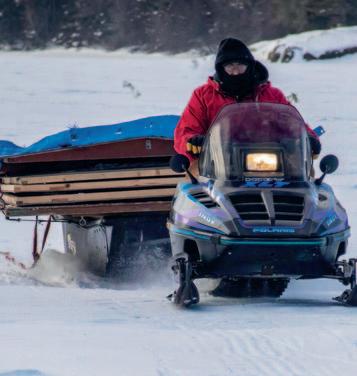
fishhouses to luxury accommodations on the ice. Many may also provide transportation and advice. There are businesses that will take you on dogsledding day trips or freight you in to a remote site in the BWCA for an extended trip and return to pick you up when your time is over.
Well, ice fishing can be anything you want it to be—from an exercise in survival to an entire winter’s endeavor. Not all appeal to me personally, but I

commend any activity that can shorten our winter months with activities and entertainment. If you’ve never gone winter fishing, determine your comfort level and give it a try. You might be as surprised as that grandma from Georgia!
ICE FISHING 101 is offered at Ely Folk School Dec 14th. elyfolkschool.org
Ken’s new book, Fishing and Other Mishaps, is available at Piragis Northwoods Co. and the Ely Echo.



The Art Corner 301 W Sheridan Street
Ely Art Walk ElyArtWalk.org
Ely Photographic Collaborative Find it on Facebook
Ely Folk School 209 E Sheridan Street
Gardner Humanities Trust GardnerTrust.org
Northern Lakes Arts Assn. NorthernLakesArts.org
Tofte Lake Center
Consie Powell ConsiePowell.com
Chris Koivisto Ceramics ElyArt.com
Eric Sherman Photography EricShermanImages.com
Dafne Caruso Arts DafneCaruso.com
Roy Misonznick Images ElyPix.com
Larry Ricker Photography LHRimages.com ARTISTS’ WEBSITES
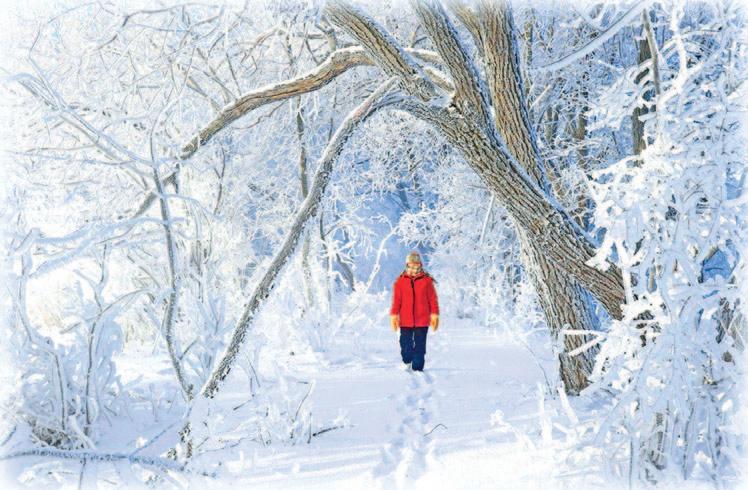
It hits my fingers first. Sinking through the layers as I stand here still, watching the blue hue of morning unfold over the hardwater surface before me. Tucked under my hat, my ears ring in the silence. The only sound being the squeak of freshly fallen snow under the rubber soles of my boot. I am the first one out here today. I even beat the sun. Nothing out here moves, except for me.
~ Samantha Sparks

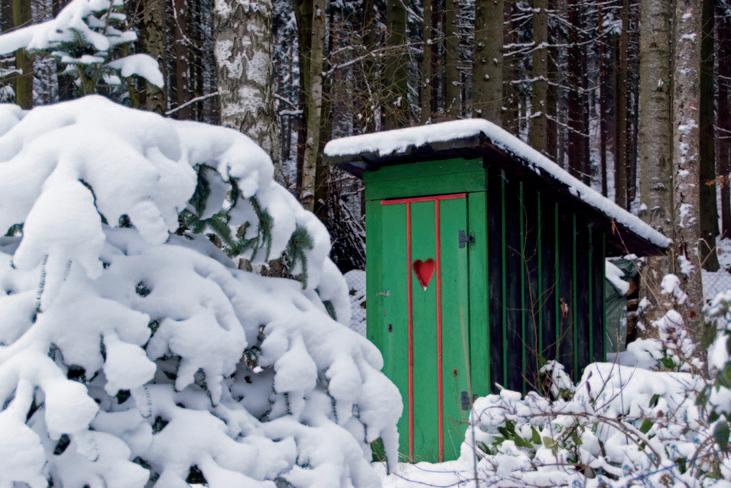
It’s warm inside the cabin with the woodstove roaring. The thought of going outside to the outhouse is not real exciting. It is now -23F out there, and it seems like a marathon run to the outhouse from the cabin. But, it is time!
I get on my warmest hat, insulated gloves, the puffiest down parka I own, and I take a big breath of warm air. I walk briskly to our outhouse which is really not very far from the cabin, pausing only briefly to notice how bright the stars are in this frigidity. The wind is making it seem a lot colder than it really is, but soon I’m safely enclosed within the four walls.
I think of Will Steger and Paul Schurke’s situation when they went to the North Pole by dogsled in 1986 when the temperatures were hot at -23F. T-shirt weather. And they didn’t have an outhouse to use. Now that is attitude. Each of us, for whatever reasons, follows a different path and encounters different journeys. In the happiness we seek in
life, we are reminded of the good things, but also of life’s struggles and disappointments. For some, those disappointments are a crisis. Our response to a crisis is also dependent on our attitude. The Chinese symbol which represents crisis has two meanings–one reflecting danger, while the other represents opportunity.
I’m now inside the outhouse and it’s ONLY -21F on the wall thermometer. I


can see my breath. Summer is all around me in the outhouse with our kayak and canoe paddles, gardening tools, and a few other things reminding me that winter in Minnesota is about attitude. I notice the Kemps sherbet container protecting the toilet paper, an important item when you have mice that spend more time in this facility than I do. In this cold it could crack like an eggshell, so I handle it gently. I hear our small lake moaning and groaning under the ice. This is NOT summer!
Outhouses allow for contemplation. I reflect on my past. More than 33 years ago, while in the Peace Corps for two years in South America, I had an outhouse. Another year in Micronesia with the Peace Corps, I had a unique outhouse suspended over the Pacific Ocean and open to the entire world. Later my wife and I had an outhouse for four years while teaching and living on a small farm in Australia. Where have I been in life? Where am I now and where am I going? All questions one can

explore in any location and at any time, especially at -23F.
Attitude is how we look at life. How we perceive the world to be and the meaning we make of it. What are the gifts we receive, and what are the gifts we give? A 92-year-old woman once said when asked what is happiness, “Old age is like a bank account…you withdraw from what you’ve put in. So, my advice to you would be to deposit a lot of happiness in the bank account of memories.”
As I contemplate in the cold, I am reminded of how much I love the work I do and the gifts others provide while I’m walking with them on their journeys. I am honored, as are my colleagues, to hear patients’ and clients’ life stories, to hear of sadness but also of wonderful relationships, and to see, after a period of time, for many, transformation taking place. I remind myself that each of us, in our jobs, is replaceable. In our families we are not. It is good not to need a crisis to remember that.

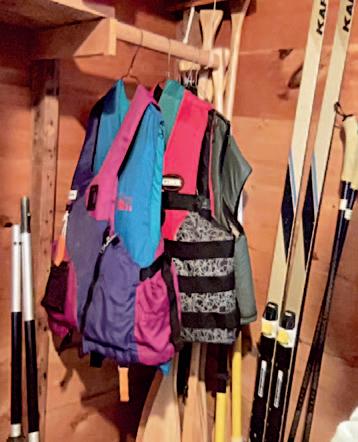

Someone once said there are five simple rules to be happy: 1. Free your heart from hatred, 2. Free your mind from worries, 3. Live simply, 4. Give more, and 5. Expect less.
Ahhh, time to head back to the cabin where my wife is cozied up next to the fireplace. She doesn’t contemplate in the cold quite as long as I do. On this trip I spend a little longer marveling at the stars and my place among them. My attitude has changed to one of appreciating this view, and I’m not even shivering! Next time you contemplate your past, present, and future–whether in an outhouse or someplace less rustic–remind yourself life is about attitude. I wish you well on your contemplations! Wherever they may be!

as grief therapist and director there and spends much of his time with his wife at their remote cabin near Isabella.


by
“I need a homey topic for my Ely Winter Times essay. Got any suggestions?” I asked my adult daughter, Celin, on the phone.
“Write about WHO-guh,” she said.
“Who WHAT?” She spelled it for me–h-y-g-g-e. Then she sent some Instagram posts as illustrations.
“Who ME? Write about interior decorating?”
“No, Mom, it’s more than that. It’s a Danish and Norwegian word. Hygge means that feeling of contentment and home, especially in winter. Like when I come home in the dark and golden light is spilling from our windows. I know the girls are inside, safe and warm, and I
can’t wait to cozy up with them on the couch.”
I said, “Oh yeah, the light falls on the snow like melted butter.”
“Melted butter? Huh! Not how I’d describe it!” Celin said.
See? I’m not the one to write copy for Danish decorating. But a word to describe that shelter-in-winter feeling–home with loved ones safe and warm inside–I wanted to know more. Online, I found a few lists of hygge principles. Turns out the concept is deeper than images of feet in taupe socks sticking out from cream-colored blankets before a glass-fronted fireplace. Although it is that too.


As I thought about the art of creating warmth and comfort in the middle of winter, I found memories of my friends and heroes, Audry and Phyllis, offering me creamy, warm cups of welcome to their cabins. They each served sweet hosting lessons along with coffee and cookies.
In 1981, when I joined the staff of YMCA Camp du Nord on Burntside Lake, Mike, the year-round caretaker introduced me to his community. Les and

Phyllis Deppe lived a mile down the road. They celebrated their thirty-fifth wedding anniversary the same fall Mike and I were married. Thor Nordwahl lived in a log cabin he’d built on a rough track a mile from camp in the other direction. There was no electricity on Thorsbacke (Thor’s Hill), but on our days off, we were welcome to hike up, pluck a beer out of his rain barrel, and ask him for a story. We weren’t even engaged yet when we began our weekly habit of walking


down to visit the Deppes. Mike called out, “Hello the cabin!” as we strolled into their driveway. Red geraniums filled flower boxes at the back of the small house. Just the week before, the boxes had been filled with balsam branches. We knocked spring mud off our boots at the bottom step. Before we could rap on the door, an apple-cheeked woman threw the door open. “Well Hi! Come on in! D’you want a cup of coffee?”
Phyllis left no space between “come in” and her offer of coffee. And there was no space between the welcome mat and their table. We dropped our muddy boots out on the porch. Les switched off his short-wave radio set and joined us at the table. They lived here year-round, but still called it a cabin. And it was the same size as some of the cozy-sized cabins at Camp du Nord, where we were caretakers. I often marveled at Phyllis’


ability to keep such a compact home seem so clean and uncluttered, but also warm and cozy. A light suspended over their table was softened by a woodshavings globe. Touches of red and blue in a table-runner, a dahle horse, and calico-print seat pads relieved my colorstarved eyes at the end of a white-andbrown winter.
We spent many winter evenings in the Deppes’ home. Phyllis served coffee and cookies while we shared stories of adventures. Hosting groups of visitors all winter long provided new challenges for me. And being newlyweds who worked together and shared a very small cabin, we had marital adventures, too. From their natural wisdom and longer married life, Les and Phyllis shared their own experiences, strengths, and humor.
She may not have known the word, but Phyllis practiced the art of hygge.


She told her daughter, Marilyn, that she aimed to make each visitor feel as if she were their best friend. She was mine: friend, second mom, and adopted Grandma to my kids. Of the five amazing grandmas my kids were lucky to have, Phyllis lived the closest.
We moved into our log home in May of 1985. I knew for sure I was pregnant that same day. Our home had a vaulted ceiling, a too-small woodstove—the only source of heat-–and an entrance door built of one-by-fours through which we could see daylight. Mike nailed up a woolen blanket as a curtain over the door to slow the blast of winter. In November,

when I was almost due, we hosted a party at our house. All our guests stood huddled around the stove with their jackets on. Phyllis insisted Mike and Les build a solid, insulated door. Joe was born in December during an Alberta Clipper–now known as a polar vortex. Phyllis was certain our baby was going to freeze. She told me to stay in the hospital another day or two. Then she martialed Mike and Les into mounting a ceiling fan to push heat back down from the ceiling. When Mike brought newborn Joe and me home, I found Phyllis in our kitchen making a hot meal. Les was on an 18foot ladder, completing the ceiling fan installation. We were certainly more comfortable thanks to the door and the fan. She may have saved Joe’s life, too.
Phyllis spread hygge outside the walls of her own home in so many ways. She served a full turkey dinner for a volunteer wood-cutters week at du Nord twice a year. She became the organizer and pumpkin pie baker for Thor’s Thanksgiving gatherings, too. And then came Audry.
Thanksgiving 1988, three-month-old Celin slept soundly over my heart, zipped inside my jacket in a front-carrier. After Mike helped three-year-old Joe out of a nest of blankets in the sled, I took his tiny hand. We knocked by stamping snow off our boots on the wooden porch. Mike cradled the sweet potato hotdish, mittens, and diaper bag in one hand while he pulled the leather latch string and we all stepped inside. This was

Mike’s eighth Thanksgiving at Thorsbacke, my sixth, Joe’s third, and Celin’s first. And we were especially eager this time, because it was also Audry’s first.
We knew Audry as a member of the Northstar Ski Club and Thor’s romantic interest. Now she was his bride of less than two months. My glasses fogged up as we stepped inside. The cozy two-room cabin was warm and moist from the wood-fired cookstove where the turkey was roasting. A crowd of people added to the warmth and noise. Joe clung to my leg as friends welcomed us with loud hellos and Thor threw his arms open. Quietly, Audry bent down to Joe and whispered something. He reached for her hand and followed her into the backroom. His release allowed me to pull off my glasses, coat, and boots and return hugs, with a sleeping baby in between.
Even with the low light of gas lamps, candles, and a fire in the fireplace, I could see that the log walls gleamed with a recent scrubbing. I knew Audry had restored the old treadle sewing machine to working order. In that moment, the

machine was tucked upside down into its cabinet, which was being used to support extra boards for an improvised extension of a table. The small, two-room cabin was transformed to seat fourteen people. But a new table runner, bright quilts on the bunkbeds in the corner, and an autumn-colored mantel piece were evidence of Audry’s work.
The sod-roofed, hand-hewn log cabin on Thorsbacke had already been very hyggelig, but Audry brought winter comfort and conviviality to a new level. As it turns out, she was unaware of hygge as a concept, but she was a natural at creating a welcoming, warm shelter in the midst of cold, dark winters in


northeastern Minnesota.
If you are Danish or Norwegian and have a better understanding of hygge, please forgive my appropriation. Because as it turns out, neither of my hygge heroes knew the term either. And that is making me giggle. Maybe that’s hyggelig, too? Laughter on this crisp fall morning, remembering my two woodsy, practical friends. Writing this essay gave me an excuse to reach out to Phyllis’ daughter, Marilyn, and to Audry. Although I’d known both women for decades–really for all my adult life–I found great gaps in what I knew about them. I confessed my ignorance and asked a few questions. And the results were so beautifully hygge.
Marilyn and I shared laughter and a few tears swapping memories of Phyllis and her loving hospitality. Audry shared her memories of her first Thanksgiving at Thorsbacke and other details about her life. I thought Phyllis was Norwegian but her daughter told me she was Swedish and English. She and Les both shared a love for Scandinavian culture. Audry is part Norwegian but national identity wasn’t part of her upbringing. She married into the Scandinavian lifestyle when she joined with Thor who immigrated through Ellis Island from Norway at five years old. The lefse Audry made every Thanksgiving wasn’t an old family tradition, but one she and Thor adopted.
As I worked on this essay, Celin and I also shared memories of Audry and
Phyllis, Celin’s adopted grandmothers. She remembers wonderful details about our visits to the Deppe and Thorsbacke cabins. And she has her own talent for creating hygge atmospheres and experiences. I benefit often from the energy and thought she puts into preparing her home and planning time together. Her home is clean and organized—despite messy me providing daycare for her girls. Her gifts are beautifully wrapped signs of love. Her
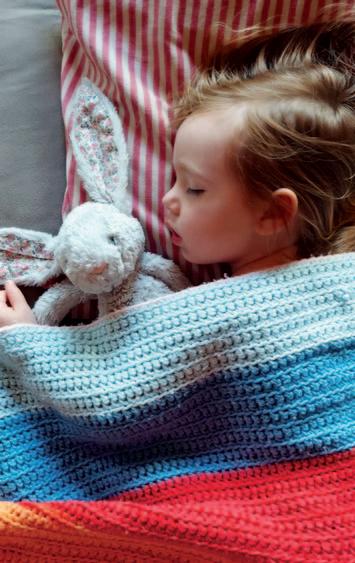


living room includes both a cabinet and a basket of blankets for snuggling on two cushy couches. There are no individual chairs in her living spaces except for the ones gathered around the table. She often spontaneously invites friends over for meals and adventures.
This winter, on a subzero night when just scurrying from car to door feels as if my skin is being peeled by an ice scraper, maybe I will pause outside my daughter’s home just long enough to appreciate the laughter, warmth, and love I’ll find inside. And because I have a word for the feeling now, maybe I’ll cup it in my heart, like wrapping my hands around a hot mug of coffee and letting the warmth radiate outward. Maybe, here in northeastern Minnesota, we are lucky to have our delicious contrasts of bitter cold and sweet warmth to help us notice just how hyggelig our lives are. May you find abundant hygge, too.

Becca Brin Manlove is the author of several books including Hauling Water which won a Midwest Book Award.

Shelter Shelter
Keep a warm, safe place and share it with others
Pleasure Pleasure
Treat yourself and your company with special food and drink Woodsyness Woodsyness
Include nature in your home and activities
Atmosphere Atmosphere
Soften light with candles and lanterns, make uncluttered space, use comfy seats
Comfort Comfort
Wear natural fabrics with pops of color


Call (Area Code is 218) or check websites and FB pages for hours and menus. Price ranges are for a meal. C: children’s menu, V: vegetarian meals, # is location on the maps, page 70. Most places have take-out, and some still do curbside delivery if you request it.

The Boathouse Ely’s only brewery serves seasonal brews and tasty food in the family dining room or bar. Duck wings, steak bites, and the best-topped pizzas in town. Burgers, walleye, Cuban sandwiches, and salads to satisfy big appetites. Beer in growlers and BW containers. Sports on big TVs. Full bar. 47 E Sheridan St., 365-4301 $11-17, C V #68

Brainstorm Bakery Did you have a crappy morning? If not yet, stop in and add some healthy fiber to your diet with locally made granola, yogurt parfaits, smoothies, fairtrade coffee, and fresh-baked treats. Pumpkin rolls make a special holiday gathering dessert. Granola and Ts for gifts in pun-filled packaging. 402 E. Sheridan, 235-6161 $5-9 V #89



Restaurant & Antlers Lounge at Grand Ely Lodge. Extensive dinner menu, b’fast and lunch specials, appetizer specials during Vikings games. Pasta specialties, salads, walleye, and steaks. Open every day. 400 N Pioneer Rd. 365-6875 for reservations. $10-31 C V #37
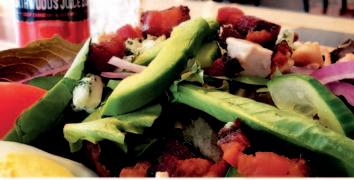
Insula This popular dining spot serves many locally-sourced and organic ingredients. Daily featured pasta special, market catch, and butcher’s cut. Expand your palate with fresh flavor blends, or choose old favorites. Casualdining ambience. Specialty seasonal cocktails, mocktails, beer, and wine. Open Tues-Sat. 145 E. Sheridan St. 365-4855 $9-34 C V #82

Frisky Otter Serving hearty breakfasts this winter Fri-Sun. Italian specialties for hungry diners, salmon and walleye, steaks. A variety of martinis unlike anywhere else. Large screen TV for sports. Open year round. 302 E Sheridan, 235-6266 $10-50. C V

Northern Grounds Coffee and wine bar. Espresso, single-origin coffee roasted on site, tea, chai, and mocha. 50+ by-the-glass fine wines, craft beers, and specialty cocktails on tap. Charcuterie, fresh-baked breads and pastries, smoothies, soup and sandwiches. Wine tasting events upstairs in Society Hall. 2 W. Sheridan St. 365-6162 $10-14 V #63



Dairy Queen - 1441 E. Sheridan
Ely State Theater - 238 E Sheridan
Log Cabin Coffee - 1340 E. Sheridan
Mitska’s Market - 141 E. Chapman
Subway -1520 E Sheridan
Zup’s Deli - 1500 E. Sheridan
Grab Something Quick Hungry?
Peanuts, Pizza, & More
Catz Billiards - 29 E. Chapman
Dee’s Bar - 17 E. Sheridan
Antlers Lounge- 400 N. Pioneer
Kwazy Wabbit - 11 N. Central
Samz Place - 1203 Old Winton Rd.
Zaverl’s Bar - 509 E. Sheridan
Ely Area Food Shelf is at 15 W. Conan St. Opens 3rd Wednesday 11-5 and following Saturday 8-11 (call for emergency)
Have Plenty?
Donate food in bins at Zup’s, Ely Library, and the Catholic church
Donate dollars - at the website or PO Box 786
Volunteer time - call or email to sign up ElyAreaFoodShelf.com • 218-235-8527 • info@ElyAreaFoodShelf.org

Britton’s Café Breakfast served all day with some unique menu items and hearty servings. Lunch with specials and burgers. Catering in classic Ely style. 5 E. Chapman, 365-3195 $9-18 CV
Domino’s Ely’s late-night option, you can eat in, pick up, or get delivery until 1am every day. Of course there’s pizza, but also salads, sweets, and many appetizer choices. Find coupons there and at Dominos.com. 32 E Sheridan St, 235-6262 $6-26 V
Happy Wanderer A scenic 22-mile drive south on Hwy #1. Open 7 days a week serving polish, pasties, pizza, wings. Road kill chili, free but donations accepted (money or ingredients?) Full bar. Hoping to be snowmobile accessible this winter.. 10502 Hwy 1 404-2146 $8-12.
Oriental Orchid Warm up with a selection from more than 100 authentic Vietnamese and Chinese menu items. Call ahead for faster service. Eat in or take out. Weekday lunch specials and dinner combinations. 506 E. Sheridan St, 365-7502 $11-$21 V
Sheridan St. Deli Earliest coffee in town at 6 am. B’fast and lunch, take-out or eat there. Brown bag sandwiches with fixin’s, house-made soup, homemade baked goods. Daily hot lunch specials. Catering for small or large events. 343 E Sheridan St, 504-4036 $8-15 C V
Stony Ridge Ely’s biggest burger selection (50 kinds!) Walleye, reubens, and more. Full bar. Cozy dining room, lake view. Saturday breakfast menu includes custom-made stuffed hashbrowns. Uncertain about winter hours so call before you make plans. 60 N. Lakeview, 235-9441 $15-30 C
Winton Road House Food and festivity. Live bands and Sat night Karaoke. Tuesday tacos, chili, and the popular giant pretzels served with melted cheese. Live music once a month. Open 7 days a week at 3pm M-F and noon Sat and Sun. 252 Main St., Winton 235-6115 $8-16 V
© John Ratzloff
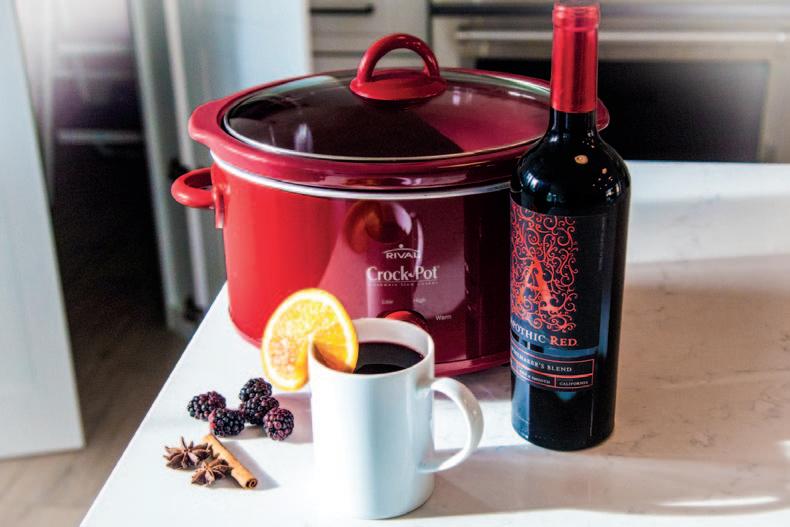
One of the best things about winter is wrapping your chilly hands around a steaming mug emanating delicious odors. The sip that follows starts warming you from the inside and reinforces the deliciousness with bountiful flavor. If there’s alcohol included, you may get that extra glow and an enhanced sense of relaxation and sociability. Ahhh…
One of the best things about living in northern Minnesota is the change of
seasons. This winter beverage enjoyment contrasts perfectly with the summer sensation of a chilled lemonade or beer or margarita in a frosty glass as the evening cools down and the sunset colors deepen. A special drink makes a special evening better, and an ordinary evening special.
Among the many talents of Ely residents, concocting memorable drinks could be overlooked if you don’t seek out the baristas and bars that serve them.


And even then, it would be hard (and expensive) to try them all. But luckily, Elyites are glad to share some of their living-the-good-life secrets. Whether you are doing a dry January, imbibing for a special occasion, or choosing a totally NA life, you’ll find something here to savor, curled up under your coziest blanket or pouring from your thermos along a snowy trail.
Sarah, Insula co-owner, and her family create a skating rink on the lake in front of their home. This involves many hours of skating and perhaps even more hours of shoveling–plenty of days spent in wintery weather. As much fun as that is, looking forward to a hot mug of something tasty adds to the pleasure. And of course, Sarah needs to create a unique winter spirits menu for Insula’s guests.
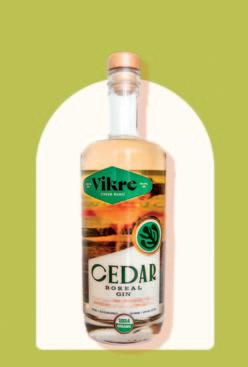
Other than some domestic beers, Sarah’s offerings feature Minnesotamade ingredients. Vikre flavored vodkas made in Duluth, Boreal Cedar gin, and Voyageur aquavit are cocktail ingredients for those who imbibe, along with a variety of craft brews. For those who are doing a dry January, are designated drivers, or otherwise not in a situation to be tipsy, there are a variety of mocktails using Mixly or Sweet Haven NA liquors. The menu always has a daily featured drink special, and in January these are all mocktails. Sarah has noticed a big uptick in NA drink popularity in recent years and the bartenders at Insula can recreate many traditional cocktails with NA ingredients.
As a business owner and parent with a full schedule, Sarah likes her hot drinks to be easy to make at home. One of her
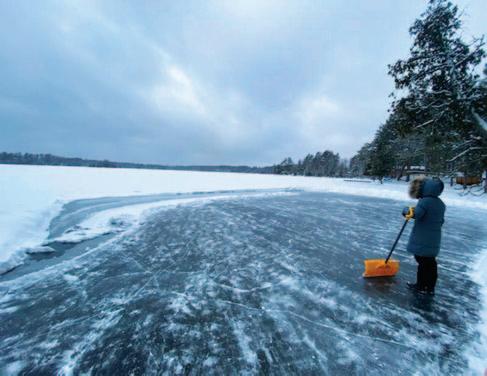

favorites is Cedar Cider: Simply add Boreal Cider Gin to hot cider in whatever proportions you like. Another easy favorite is Norwegian Coffee: Blend one ounce of Aquavit into a mug of strong hot coffee. Add brown sugar and whipping cream to your preferred taste. The combination of alcohol and caffeine will give you the energy to hang your Christmas decorations or work on your taxes, and the upbeat attitude to find enjoyment in the process. Well, maybe not for the taxes. But if it isn’t April yet, you’ll be relaxed enough to put them off.
Speaking of holiday decorations, there’s a recipe for mulled wine from Northern Grounds wine connoisseur and bartender, Dale, on page 38. It’s just right after a caroling party, but also perfect following a group ski or snowmobile ride, hockey game, or any chilly winter sport or outing with friends. It goes best with rosy cheeks and frosty eyelashes, and can be consumed indoors or out.
Dale says to use a modest wine like a red blend or a merlot for the base. The wine is just the carrier for the fruit and spice flavors, so it needn’t be expensive or complex. Once the mixture is heated, it can be kept warm in a covered crockpot or a kettle on a wood stove, or suspended over a bonfire. Remove the spices, though, or they can add too strong a flavor or become bitter. Refrigerate leftovers, in the unlikely event that there are any.
For a non-alcoholic mulled wine, simply use one of the many choices of NA red wines. You can find a big selection at Ely Liquor Store, where Eric, the owner, keeps a large inventory of all NA products.
Wondering how something like wine or hard liquor is made to be NA? Eric explains that some products are dealcoholized and others are made by changing the alcohol-generating processes of distillation and fermentation
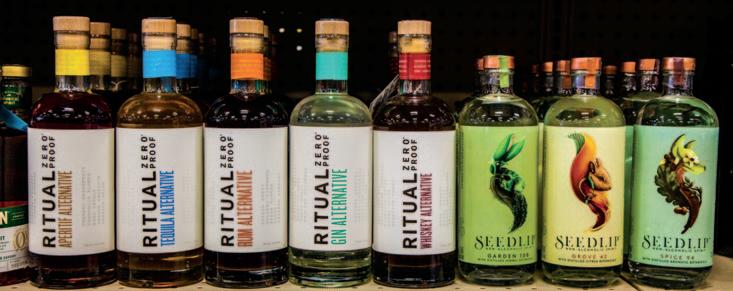

so that most alcohol is excluded from the final product. With their soaring popularity, no- and low-alcohol products are seeing new methods of manufacture and higher quality in the offerings. There’s much more to learn, but not enough space here, so let’s get back to Eric and hot drinks for you to try.
Eric makes his own Tom and Jerry and Hot Buttered Rum mixes, sold at Ely Liquor in tubs like Cool Whip. They are refrigerated so you might have to ask at the counter. You choose your favorite spirits, NA or not; rum is a popular choice for winter festivities. Put a few dollops of the mix in a mug, add as much liquor as you wish, and fill with hot water. Stir until it’s well mixed, add a sprinkle of nutmeg or grated dark chocolate, and you’ve got a luxurious hot drink that was simple to make. To ensure it’s hot enough to warm your innards, pre-heat the mug and be sure the water you add is boiling hot.

Simply adding sprinkles to cocoa, along with marshmallows and whip cream, makes a celebratory hot drink.
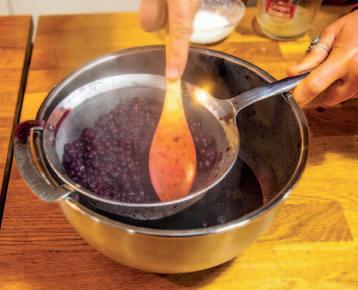
When it’s below zero and you’re trying to conserve fuel so the house isn’t as cozy as you’d like it, you can do jumping jacks. Or you can snuggle up with a cup of this nutritious drink. As every winter camper learns, you can warm up by adding fuel to your body. Fat is fuel; butter is fat; and this recipe from Andrea at Brainstorm Bakery is delicious. Andrea and her family especially enjoy this on movie nights.
Butter Beer is a little too fussy and hard to keep warm all day, so you can’t find it at Brainstorm. But you can order a mug of Miel (French word for honey). Made with espresso, honey, milk, and cinnamon, it’s a good one for take-out, especially for a long drive in a cold car.
Adapted from the website
All the Nourishing Things

5 C. milk (or coconut milk)
5-8 Tbsp butter (depending on how cold you are)
1/2 C. maple syrup
1T vanilla
1/2 tsp cinnamon
1-4 scoops collagen powder (optional for extra protein)
Melt butter over medium low heat. Whisk in syrup until mixture is totally blended and bubbly. Slowly whisk in milk and heat until steaming. Do not boil. Remove from heat and whisk in remaining ingredients.

The last recipe comes from Rosa, whose family just purchased a farm on Robich Road. In addition to being a certified midwife, Rosa tends to chickens, ducks, goats, pigs, and her children. By next summer she will also have horses, board them for others, and offer riding lessons as well as farm fresh eggs and goat cheese.
Rosa is an award-winning chef, the winner of last year’s Ely Folk School Donor party where three chefs competed for best of the evening’s entrees and beverages. Rosa won the beverage contest with her Northland cocktail, a blend of gin infused with juniper and cedar and local berries. As delicious as it was, the drink that follows is even better. A traditional hot drink in cold


northern lattitudes, but surprisingly not well-known here, Mustikkakeitto in Finnish, or Wojape in Lakota, or a word in Swedish that the keyboard doesn’t have letters for is available at most grocery stores in Finland (Europe, not MN). It has an intense blueberry flavor richer than any pastries featuring Minnesota’s most popular and plentiful berry.
Rosa has fond memories of being a youngster in XC ski races, feeling cold and tired well before the finish line, taking a break to indulge in a mug full of the warmth and energy this beverage offers, and zooming off with renewed enthusiasm to finish the race. No doubt her children will reminisce about hot blueberry deliciousness on ski trails when they are adults.
Clip and Save

Bring the berries, water, and cinnamon to a boil. Reduce heat and simmer 20 minutes. Strain the liquid by pressing through a sieve or remove the cinnamon stick and puree. Add syrup and lemon. Mix corn starch with 3 Tbs water and stir into mixture to thicken. Return to the stove and bring to a simmer. Serve in mugs or bring along in a thermos. Drizzle in cream or top with whipped cream.

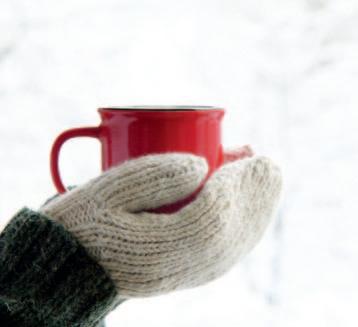
There is something about a winter outing and the hot drinks that follow that makes for nostalgia. Childhood sliding parties, first crushes, holidays when the kids are little, the first Christmas with grandchildren–as life goes on, the memories build up. A sip of hot chocolate or a mug of mulled wine adds richness to those recollections of snowy good times and holiday cheer. Whether you’re enjoying an old favorite or trying something new, you’ll make the winter better with some great hot drinks.
Clip and Save
2 Large Oranges 1 bottle red wine
1/3 C Brandy 2 Tbs maple syrup
2 cinnamon sticks
4 Star Anise
4 Whole Cloves 1/2 C fresh berries

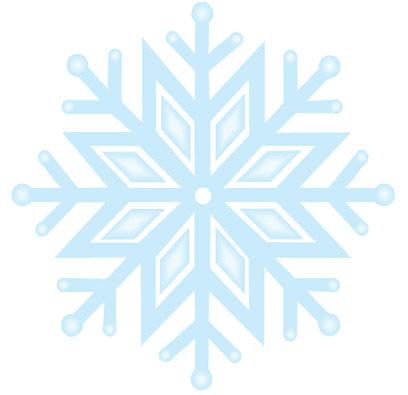
Slice one orange in half and the other into even round slices. Heat a large pot over lowmedium heat and add the slices. Squeeze the juice from the other oranges into the pot. Pour in the wine, then the brandy and syrup. Add spices and stir. Turn the heat up to medium and simmer, covered, for 30 minutes. Reduce heat. Taste and add more syrup if desired. Remove spices, or leave in 5 more minutes for more flavor. Serve in mugs. Garnish with berries and orange slices.


by Steve Engel
Including photos except as noted
Yesterday’s snowfall lay across a pile of bricks in the back lot of the hardware store. Tracks of a small animal crisscrossed the pile, entering and exiting tiny cave-like openings at its edges. This pile of bricks had intrigued someone, but who? Not juncos or snow buntings, two of our winter birds that often leave tracks in

An ermine makes multiple trails going from beneath a backyard deck to a nearby woodpile. It exited the deck twice (outside tracks) and returned once (middle tracks).
the snow, for they wouldn’t fit where these tracks go. Not a mouse, for the tracks are too far apart in many places. A closer look revealed the tiny prints to have five toe pads with crisp claw marks at their tips. Given this foot structure, and the story of exploration the tracks told, it appeared that a weasel had been on the prowl, investigating potential hiding places of its prey.



Ephemeral stories such as these are everywhere in the north woods winter landscape. To notice them and ask, “I wonder what happened here,” is to enter the fascinating world of animal tracking.
An easy way to begin is by watching easily-observed animals, such as dogs, cats, squirrels, and deer, moving about in the snow, and then looking at their tracks. That’s one of the best ways to learn the relationship between an animal’s body shape and size and the pattern of tracks it leaves behind. Understanding this relationship is the key to reading the myriad of stories written in the snow each winter.
Weasels and many related species ( mustelids ) are in general tubular carnivores with short legs and a slinkylike body. The weasels around Ely–least, short-tailed and long-tailed–are also called ermine in their white winter coats. They typically leave a trail of paired

A direct register deer track. Note the ridges of sand near the bottom of the two large hooves, formed by the smaller hooves of the rear foot, which stepped directly inside the front track.
tracks created when the hind feet land on top of the tracks made by the front feet. The distance between sets of tracks can be 2-3 times the weasel’s body length.
Built very differently from an ermine are the deer, dogs, and cats with their long legs, narrow hips, and narrow shoulders. Their front feet support the heaviest part of their body and are larger than their hind feet. When walking, the opposite-side front and hind legs move forward at the same time, with the result that the hind foot lands on top of the track made by the front foot on that side. Trackers call this a double register, and it can be direct (looks like one footprint) or indirect (a partial front footprint visible beneath a complete hind footprint). With dogs and cats, the hind foot often lands ahead of the front foot.
The trail of a walking deer is a zigzagging series of double registers eighteen to twenty-five inches apart. This pattern is noticeable on many snowcovered lawns in town. In fresh powdery snow, the holes may exhibit lines at the front edge, made by the tips of the hooves as the foot lifted out of the hole.
Most field guides define stride as the distance from one set of tracks to the next set on the opposite side. For trails made by a walking deer, dog, or cat, the distance from a track to that same foot’s track again, equals the distance between the animal’s hip and shoulder.
Gait refers to the coordinated movement of an animal’s legs and body. Walking, trotting, loping, bounding, and galloping are examples of gaits. Each gait produces a characteristic track pattern, and animals will favor one gait over another based on their body shape, current activity, and snow conditions.
When deer, dogs, and cats walk, one foot is always touching the ground, and the backbone remains horizontal. They use this gait ninety percent of the time because it is energy efficient and serves their purposes of traveling between food and shelter.
Faster than a walk, and still energy efficient, is a trot. The body mechanics are the same, but in a trot the animal becomes briefly airborne between sets of tracks and the stride increases measurably.
A trot may show direct register, or the hind foot may overstep the front foot to one side. This gait is called a side-trot, where the animal’s rear end angles to

one side relative to the direction of travel, allowing it to speed up without tripping over its front feet. Wild canids such as wolves, coyotes, and foxes often do this when they are traveling a long distance. Deer, dogs, and cats bound, lope, and gallop when they need to move quickly. Deer running in deep snow will leap, landing with all four feet coming down in quick succession, the front feet first and then the hind feet landing ahead of the fronts. A series of oval, deer-sized




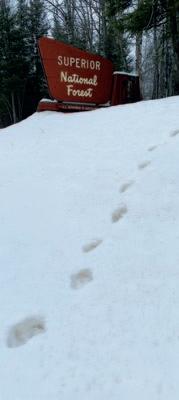
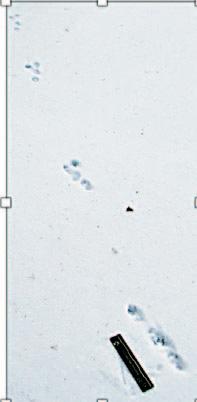
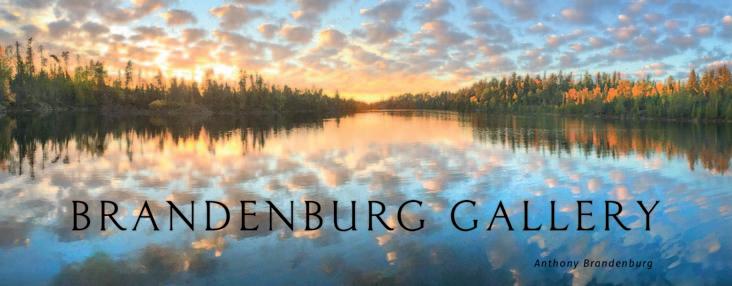
impressions in the snow, five to twenty feet apart, is the result. Wolves and others also leave impressions of corresponding size and distance when they gallop in deep snow. As the animals move through the snow, their movement throws snow ahead of them, indicating the direction of travel. This holds true for whole body tracks or individual footprints.
The narrow bodies and short legs characteristic of mustelids, including pine marten, mink, fisher, and otter, favor gaits such as bounding and loping. These gaits leave quite a different pattern of tracks from the diagonal walk pattern of deer, dogs, and cats.
These creatures can move like a torpedo, slinky, and gymnast rolled into one. Their front feet land and push off just before their hind feet land right next to, and sometimes on top of, the front

Left: Fisher tracks. The distance between the lower and upper groups is the stride
Right: A wolf trotted across the Kawishiwi River in deep snow. If there is more than one wolf, they will step in the leader’s tracks.
tracks. From this stance they can change direction on a dime or leap two or three times their body length as they tirelessly hunt for food to fuel their high metabolic rates.
When measuring lopes and bounds, the space between groups (all four tracks equals a group) is the stride. The size of the feet and corresponding trail width help distinguish which member of the weasel family made the tracks. Following a trail as far as possible and seeing how the animal deals with snow conditions and its activity in different habitats is also helpful. For example, fishers travel mostly on the ground and often use a loping gait in shallow snow, leaving groups of three or four distinct tracks, whereas martens typically use a lope that leaves a pair of double register tracks, and they climb trees more often. Fishers are also expert tree climbers and


sometimes lope in the same way martens do. Both animals prefer mature, complex forests and avoid open areas, but it is primarily the smaller marten that makes use of the subnivean (under the snow) environment. Long-tailed weasels and mink frequent edges of ponds and streams more than the other small weasels.
squirrels, beavers, woodchucks) have their own distinctive body shape and corresponding track pattern. The smaller rodents move by bringing their hind feet around the outside of their front feet and landing them side by side ahead of the front tracks. The front feet tracks may be side by side as well, or slightly offset.
The red squirrel is our feisty native

River otters have the most fun traveling in winter. Though they may lope or bound, when conditions are right they toboggan on their bellies, creating distinctive slide marks. They may travel for miles between bodies of water, leaving tracks in the middle of a forest that can surprise human trackers who expect to see them only near water.
The rodent family (mice, rats,
tree squirrel. It does not hibernate, and its tracks can be found all winter long. It leaves groups of four tracks in a bounding pattern and its trails often begin and end at a tree. The hind feet, which are larger and have five toes compared to four toes on the front feet, lead the way. Piles of pinecone scales and stems, called middens, indicate where red squirrels have been feeding






Abandoning an animal is a CRIME in MN. Please REACH OUT if you need help! 218-638-2153 • ContentedCrittersMN@gmail.com
and nearby tracks may lead to their underground cache of seeds.
Larger rodents, like beavers and woodchucks, use the same galloping gait to “run” but do something between a walk and a waddle at normal speed, leaving a hind print on top of, or near, the same-side front print as in a diagonal walking gait.
Hares and rabbits, with their extremely powerful rear ends, also bring their hind feet ahead of their front feet, even if moving slowly. The front feet are typically offset, forming the stem of the Y shape that is characteristic of snowshoe hare tracks.
Evidence of an animal other than its footprints, such as tooth marks on vegetation from feeding and scat (poop), is called sign, and can be abundant when you follow the trail of an herbivore. Pellets made by rabbits and hares are smooth and oval, like M&M’s. Those


made by deer are wrinkled, like raisins. Moose scat is oval and much larger.
Rodents, hares, and rabbits have incisors in their upper and lower jaws, allowing them to cleanly sever twigs and buds from a branch with one or more bites. The resulting sign is a forty-five degree angle cut, as though done with a knife. Thicker branches requiring multiple bites will reveal “steps” across the deadwood that are grooves made by the teeth.
In winter, hares and rabbits also strip the bark on live shrubs and trees to reach the nutritious cambium layer. They especially favor the thinner bark of large, wind-pruned branches from higher up in the canopy. When feeding this way, hares and rabbits tend to bite past the cambium layer and deeper into the sapwood than porcupine or beaver do, making the debarked wood appear quite rough.

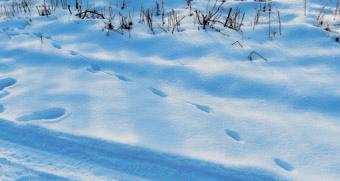
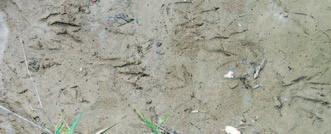

During a warm spell, the topmost inch of this frozen pond had melted when a lynx walked through the area, traveling right to left. Temperatures fell and the tracks were frozen in place, then became highlighted with a dusting of snow.
Moose and deer also feed on woody vegetation in the winter, but they do not have upper incisors. They clamp the twig between their lower incisors and upper palate and pull. This leaves a distinctive ragged chew, rather than a forty-five degree angle.
Snow conditions can vary across the landscape, and this affects the presentation of the tracks you find. When animals travel on frozen waterways, interesting presentations of tracks can occur based on conditions at the time the tracks were made and the ensuing weather. On a frozen lake, the snow compressed at the bottom of the track resists erosion by the wind more than the surrounding snow, which can lead to the track being revealed in relief months after the animal has passed. As the snow melts in late winter, lake surfaces may show a record of the many animals, including humans, that traversed it throughout the winter.
By paying attention to tracks in the snow, even a brief winter walk will get


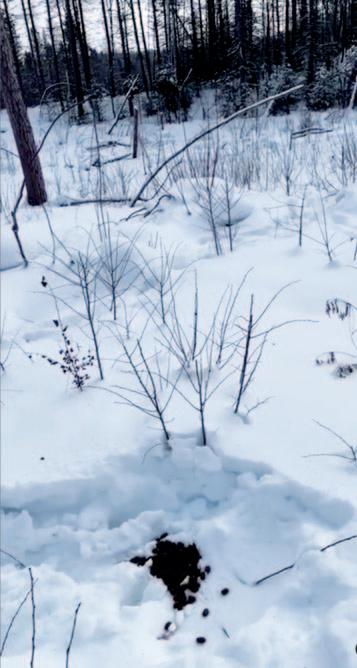
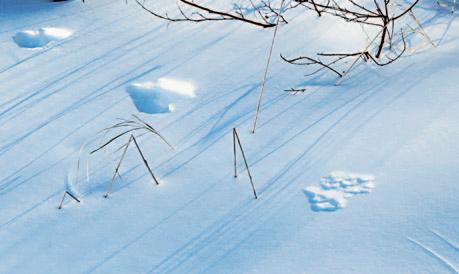
you thinking like Sherlock Holmes as you come upon one mystery after another. Despite the cold, snow, ice, and wind, the north woods is home to many creatures that are active throughout the winter. They must find food and shelter enough to survive, and in doing so they leave behind tracks and sign for you to notice and read. New stories are written with each snowfall, and the elements of time and weathering become layered into the stories. Sometimes the last patches of snow to melt on a spring roadside are the oval patches of compressed snow made when a deer bounded into the woods months ago. When those finally melt away it is time to see what you might find in mud, or focus on bird songs instead and wait for more abundant tracks that will show up next winter and more true- life stories, as told by tracks in the snow.
This snowshoe hare, bounding slowly left to right, has placed its hind feet on top of its front tracks. The splayed hind tracks on the firmer crust in the lower right corner demonstrate how this animal got its name. At high speed, the stride can be twenty feet and the group itself six feet long from beginning to end. If you follow hare tracks, they will eventually show where the animal came to a stop.



- Hare browse marks, clean cut

The author offers winter wildlife tracking outings through the Ely Folk School, Jan 4, 11, and18. Register online at elyfolkschool.org. For more recommended resources visit the online edition at RavenWordsPress.com.

Whether you’re looking for a special book to add to your library, a quick and lively story, or a gift for the “book person” on your list, you’ll find something fitting among these titles.
For local lore and outdoorsy themes you can’t beat books by local guide, photographer, sportsman, and author Ken Hupila. Catchin’ Fish and Other Mishaps is his most recent sharing of his time on the lakes and in the woods around Ely. Join him fly fishing for sunnies, being trained by his hunting dog, listening to and interpreting the language of ducks, accidentally being over the limit on fish within view of a Canadian warden, and skiing on thin ice–no, make that open water. And so much more.

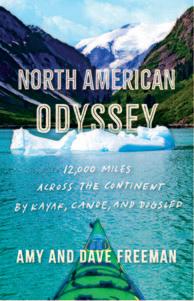


activism as they were by the obviousness of climate change, as impressed by the hospitality of the small indigenous communities, and as thrilled by the wild adventures available on public lands.
Dave and Amy Freeman are Ely adventurers who go much farther afield. North American Odyssey is their new book that details their honeymoon trip, a 3-year, 12,000 mile adventure through wild places as remote and thinly populated as northern Canada and as urban as the east coast cities. Sharing their adventure are 65,000 students who pose questions, vote on routes, and keep in touch weekly through satellite technology. You may be as inspired to
A more domestic approach to adventure is found in two books about DIY cabins. Hilarious and heartwarming, Cabin is the author's tribute to the improvement a run-down shack made to his life–and could make to yours. Although it's not set in Minnesota, it could be. An aimless
computer techie borrows $7500 from his mother to fund his whim to buy a remote patch of
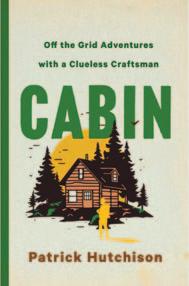
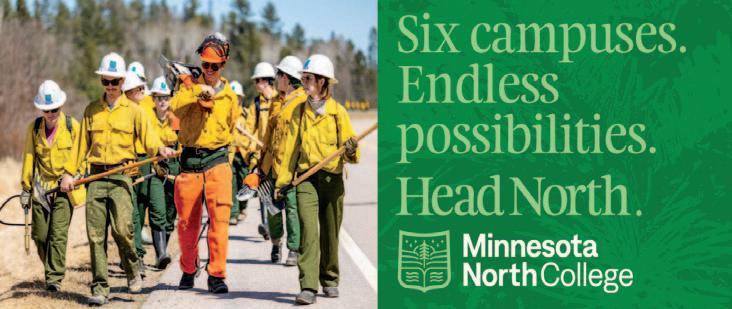

Quality used books on all topics, including many with local interest. Bring yours in for a discount. Big free box. Home to Prairie Fire Tobacco, with imported and domestic blends. 139 E. Chapman St. 218-365-2212


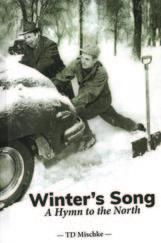


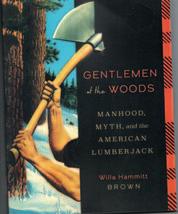

land with a crumbling structure. Not knowing the difference between a Phillips and a flathead screwdriver, say nothing of how to use a power tool, Patrick spends hours at the local hardware store, convinces a bunch of equally inept, adventure-seeking friends to help him, and invests many weekends in making the place semi-habitable. By the book's end, both he and the cabin have become more capable of fulfilling their purpose in life. Don't read this while lying next to your sleeping partner; your laughter and deep sighs of contentment will disturb them. Do read this if you want to be motivated to find a project to propel your own life forward, or just an enjoyable read.
Closer to home, The Last Cabin entertains readers with humorous everyday north woods cabin-life anecdotes laced with the frustrations of being an old person dealing with a younger generation’s technology. Firewood, driveways, docks, fishing tackle, and even rented cabins in other places fill the pages with what will one day be nostalgic memoir but for now contains some practical advice to the DIY cabin owner with limited funds. If you enjoy this book, Mike has five more in a similar vein.



If you’ve ever romanticized the long-ago life of the lumberjack as portrayed by the heroic legend of Paul Bunyan, this book may open your eyes to a far darker and more realistic history. Eschewed by more stable, town-dwelling citizens, despised and even feared by higher levels of society, the men who leveled the big pine forests were largely considered undesirable and even dangerous vagrants. Gentlemen of the Woods corrects the history that myth has created regarding the lumberjack. For those who enjoy fresh views of history and comparisons to modern issues, this is a fascinating read.
For more locally-focused intriguing history, read how the Kekekabic Trail came to be. If you think this trail is tough to maintain and travel now, think about building it in the first place. Originally imagined as a railroad to access resources between Snowbank Lake near Ely and the Gunflint Trail 40 miles east, the project was abandoned as too difficult and costly with too little financial benefit. But the CCC work programs of the 1930s and USFS had renewed interest in the route as a way to connect four fire towers and maintain portages between the lakes along the way. This booklet details the original construction, the abandonment by the USFS as a maintained trail due to disuse, and the renewal with the current interest in Heritage Trails and as part of the North Country Trail (for which Ely is a Trail Town).
If you have an interest in Ojibwe culture, history, and modern life, you need the book Fur Trade Nation by Carl Gawboy. Similar to a graphic novel, each page is full of drawings and text that succinctly explain the social order and the Ojibwe civilization that existed before and during the fur trade and their way of life that persists and is perhaps becoming more valued by society at large today. The unique Ojibwe sense of humor makes for fun reading throughout, and the hard parts are presented with honesty and dignity. A short list of some topics covered: how to build a fur post, clans then and now, how to make traditional clothing, how to remove quills from a porcupine, interdependence during the fur trade era, fur trade jokes, chiefs, Voyageur life, the Metis, passenger pigeons, drums, land allotment, building and paddling canoes, and lots of quotes from centuries ago to the present.




An artistic treasure of a book, The Milkweed Lands is for those who enjoy flowers, botany, insects, lovely illustrations or a good science read. Full of pictures that are as educational as they are gorgeous, the book emphasizes the interconnectedness of the hundreds of organisms that are associated with the many species of milkweed. Monarch butterflies are the best known, but there are so many more. The four seasons and the varied habitats across the continent create a diversity of adaptations, many of which are carefully explained in a most engaging style. A book for adults, but children are likely to be entranced too.


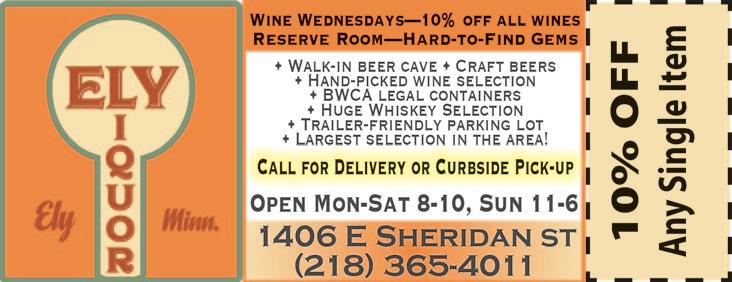

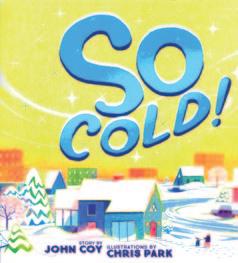
And speaking of children, here are some fun choices for them. For preschool and early elementary, Hide and Seek in Nature challenges kids to find the creatures hidden in the fold-outs and cut-aways of this sturdy, take-along book. This is like a playful game that also connects the little explorers to nature.



Do you need something to do with the kids when it’s So Cold the car won’t start? With this book kids will be eager to get outside and make a banana hammer,
All these books can be found at Piragis
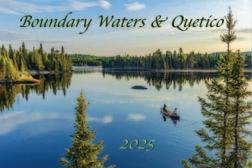

maple syrup candy, frozen bubbles and other sub-zero magic. Fun for adults, too! Ice Dogs is a can’t-put-it-down chapter book that accurately portrays the excitement, joy, rewards, hard work, and dangers of dogsledding and winter adventures. A dramatic story of teens lost in a blizzard, it is impressively accurate about the good choices and mistakes that make the difference between death and survival.





by Lacey Squier
Including photos except as noted

What is the Tofte Lake Center?? It’s the best place in the world – for anyone who loves water, loves wilderness, loves the boreal forest, loves loons, eagles, or stars… and loves art.
The Tofte Lake Center (TLC) is a nonprofit artists retreat center on Tofte Lake off the Fernberg Road, east of Ely. It was founded in 2008 by Liz Engelman, and she serves as its Executive Director. Liz has created a benevolent institution that invites artists into values-aligned experiences. Those values are: nature is
nurture, unplugging is connection, play is work, and creativity is inclusive. Residencies are about aligning, centering, grounding, and creating at nature’s pace.
In spite of having heard about all this when Liz was my guest on the What’s Up Ely Podcast (episode 12–one of my alltime favorites), I still wasn’t sure what to expect upon arrival.
My application for an artist residency at the Tofte Lake Center (TLC) went something like this:
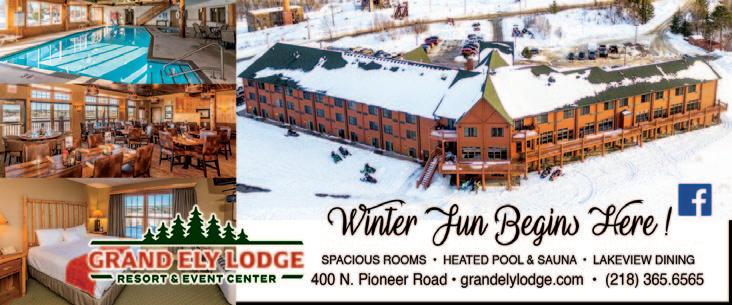

“Community, and the vital importance of feeling a sense of belonging in community, is the ultimate theme of the script I’m working on for a project with my friend, M, a filmmaker and a storyteller. The ability to be in community with other artists at the Tofte Lake Center would be an exciting, meta source of inspiration. I’m new to even identifying as an artist and using the word art to describe my writing compulsion. Feeling community and belonging among other artists would be deeply affirming, and would fuel the persistence needed to fulfill my artistic dreams.”

And so you can see that, in February, I was grappling with my identity as a writer and creator, and yearning to find a sense of belonging among artists. I was feeling hopeful, I was feeling ambitious.
Six months later, by the time I turned left off the Fernberg, I had forgotten all about that version of me. Instead I was totally and completely burnt out on “community.” I was tunnel-visioned on solitude.
I entered the beloved Roadhouse feeling (and looking) haggard, exhausted from chronically shoving too much work and activity onto my proverbial plate. I had been go-go-go-going for months, and, to be perfectly honest, I wanted nothing to do with these strangers with whom I was dining.
Over our orientation dinner that night, fellow residents and I learned about TLC’s decidedly few rules: the only thing you have to do is leave [when the residency ends]; there are no “shoulds” in the woods; and protect your middle (that juicy, tender time between shedding the chaos of arrival and mentally preparing to depart).
There are no shoulds in the woods.
Delicious slow down–delicious, delicious. I sat next to an open window as lightning rolled over the lake, and I wept with gratitude for the gift of time. Time to create. Time to feel. Time to experience
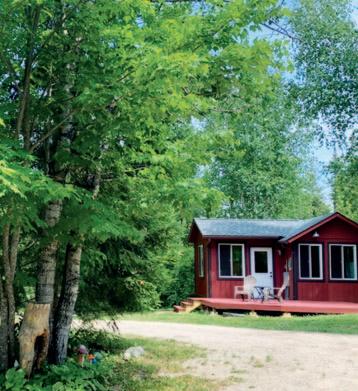

the glory of the Wilderness. The awe and wonder of slowing down was a salve.
I was fortunate to participate in the only two-week residency of the summer. I spent the first week shedding the frantic energy of urgency. Then something magical happened halfway through–the juicy middle that we were encouraged to protect.
My residency was in collaboration with a creative partner and friend, M Baxely. We were embracing a rare opportunity to work on a short film project together–physically in each other’s company. This was valuable given that M lives in Grand Marais, and I live in Ely.
Our time together at the Tofte Lake Center was about dreaming, about imagining what could be. What if we make a film that we’re proud of? What if we create something delightful, thoughtful, vulnerable, powerful, beautiful, and true? What if it gets people talking about community? What if we grow our collective capacity for grace?
After settling into that soul-nourishing middle, I was also finally able to ask myself: What if I connected deeply with other artists, from other parts of the country, creating in other mediums? That second week I fell into platonic love with my fellow residents.
Sid, a Brooklyn based screenwriter who was using his residency to record an album exploring his family heritage as an Indian American man. He made us delicious chickpea curry, and refused to let us ignore the glory of the night sky.
Maxine, a San Francisco based dancer of Turkish heritage, taught us about the power of dance and movement. Banna, an Eritrean-American, Harlem-based playwright inspired me to consider what makes a media mogul (—and why can’t that be us??). Lane, an LA based film director who was using his residency to write a memoir about his experience as a trans man, was the captain of the sauna. We had group saunas every night, thanks to Lane’s enthusiasm for this northern Minnesota tradition (previously foreign to him).And of course Liz, the Founder, Executive Director, and Captain of Dramaturgy who stewards people through both their artistic and their human goals for the duration of their stay.
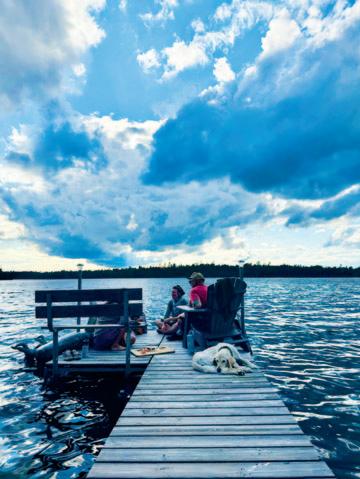

For her, dramaturgy is about the flow of artistic endeavor and could apply to theater, music, writing, dance, or visual arts. She works with the residents to find the paths to effective expression of their creative ideas. And she is the ultimate dock-o-clock host.
By candlelight in the steamy sauna, and under the stars during intermittent dips in the brisk lake, we talked about music and movies and life and culture and history and time and love and family. We talked about our art, we talked about our selves. It was a transformative experience.
It’s a beautiful thing, to see and be seen by people you respect, to fall in love with several erstwhile strangers all at once.
Through the Tofte Lake Center, Liz makes the beauty of the boreal forest, and the vast enchantment of the

Wilderness, as well as her special skills in artistic stewardship accessible to all.
TLC offers several types of residencies: Individual artist, MN BIPOC artist, artist educators, MN parent artist, national emerging artist. Go to www.toftelake.org/2025residencies for more information and to apply for a 2025 residency. Artist residency applications will open on December 1 and close on December 31, 2024.
Stay tuned for announcements about the summer 2025 Tofte Lake Center Day at the Lake, when the campus is open to the public for a tour, arts activities, and a picnic by the lake. Updates about the status of the film project that M and I were working on at TLC will be included in Boundary Waters Connect newsletters.


The beginnings of Tofte Lake Center (and Norm’s Fish Camp, as it was once known) are the subject of a Summer Times article from 2011. RavenWordsPress .com has Times archives where you can find it.










There is no such thing as a boring Ely winter. We have festivals and more festivals–two new ones and the revival of The Great Nordic Beardfest as well as the Ely Winter Festival and Snow Sculpture Symposium that’s been around since
1986 and the Third Annual Ely Film Festival, now with new dates in March. Get a good start on your beard, if you haven’t already, and practice waxing your mustache or, for the naturally unbearded women, rustle up some fur and get ready to compete as a bearded lady. Hosted at the State Theater again,


this festival’s proceeds will all go to Contented Critters. In addition to the entertaining hairy competitions, there will be live music both nights and corn hole and dance competitions. Can’t beat that for fun on a cold winter night!
Brand new is the Great Nordic (do you sense a theme here?) Shakespeare Festival, which promises to be the coolest such event on the continent, or perhaps the planet, literally. Most such festivals throughout the world are held in summer months, or at least spring or fall. Although the Fairbanks Alaska Bard-oThon in March could possibly come close to Ely’s January temperatures, it’s unlikely to be cooler figuratively. That’s


because, in addition to numerous public performances and school presentations of Romeo and Juliet, Ely’s festival is going to have some very cool workshops. Don’t stop reading just because the only acting you’ve done has been to fake a belly ache when you didn’t want to go to school. These workshops are for anyone looking for some fun on a chilly mid-winter Saturday. Explore the classic characters and their dilemmas, and note how they relate to your experiences. Consider the relevance of universal themes in Shakespearean dramas to today’s world. “A plague on both your houses” sounds like a line that you might hear by a disgruntled Independent in the halls of Congress.
Also brand new is the Ely Dark Sky Festival January 10-11. Enjoy moonlit skies in the early evening and late night dark skies in what we hope will be the crisp clear weather typical of Ely in January. The moon will be nearly full, so chances are good you can enjoy
At Joe’s Marine & Small Engine Repair Chainsaws, snowblowers, generators. Mechanics are on duty and parts are in stock. 25 W. Chapman St., 219-365-6264

flashlight-free outdoor time, letting your eyes adjust to your maximum night vision. Even if it’s cloudy and snowy there will be plenty of opportunities to learn about the galaxies, black holes, constellations, and other mysteries of the universe. Telescopes will be available. Snowshoe on Fall Lake or kicksled around the Trezona with knowledgeable guides. Plan a stay at Camp duNord and you can have the thrill of a nighttime sauna and dip through the ice. The Ely Public Library will have astronomy stations where you can learn how scientists investigate deep space and our own solar system. It will be a full weekend of a Minnesotan’s idea of fun!
Moving from Earth to a galaxy far, far away, can you guess what gigamiinigoz mamaandaawiziwin means in Anishinaabe–the language of the Ojibway peope? May the Force Be With You. Now you can watch the 1977 Star Wars movie with dubbed Anishinaabe language. Several Minnesotans were involved in the translation, which was quite a challenge. It is streaming on Disney+, and the Ely State Theater will show it in the Greenstone, Feb 28-Mar 5.

In other film event news, Mary Casanova is working on a screenplay for her series of novels set in the 1920s along Canada-Minnesota border. Rainy Lake has already won a Script Award and will soon be moving into production as a TV series.
In other developments in Ely’s vibrant arts community, a new gallery opened last summer. The Meadows has a variety of artwork and crafts from local and regional artists in a calm uncluttered atmosphere. They also have studios to rent for artists who need a quiet space


without distractions and conveniently located for town amenities.
Northern Lakes Arts and The Meadows has teamed up to present the new Creative Spirit of the North Award for one local (within 30 miles of Ely) visual artist. Contenders can apply or be nominated. Although applications are closed for the coming year, take the upcoming year to think about whom to nominate or whether to apply. Winners get a generous stipend, a year’s worth of studio rental at The Meadows, and many opportunities to showcase their talents.
Individual artist shows will resume this spring at the Hub, which will offer a longer time frame for works to be on display than the theater could provide. Look for information about the shows

and artist receptions at the Northern Lakes website starting in March.
Moving on from visual arts to music, did you know there is a community choir again? Led by Ely high school vocal music director Mike Rouse, this group is also interested in incorporating a children’s choir. They will be performing a Christmas Cantata, “Love is Born” at Grace Lutheran Church on December 7th at 7pm.
The group formed last summer to perform a summer cantata, and they so enjoyed it that they asked Mike to do something more in the fall. So in October Mike started practices for the Christmas cantata. The choir hopes to gather again for a spring and then a summer performance. Meanwhile an

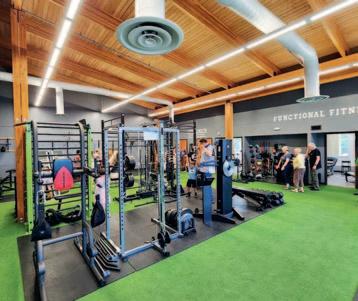
intergenerational choir has been singing at Carefree Living just for fun every other Saturday afternoon. Youth from ECR and Carefree residents sing old time favorites and current pop and have a heck of a good time. Might it be only a matter of time before these two choirs join forces? If you’d like to join, contact Mike at elycommunitychoir@gmail.com.
On the construction side of things, the Ely Area Community Foundation fulfilled its dream of opening a space for a variety of community-focused organizations and events. The Hub had its Grand Opening on July 31st with impressive attendance.
Now there is full time childcare and pre-school for children 6 weeks to 5 years with a bright spacious room and a large outdoor playground. Functional Fitness has also been able to expand offerings and create a more open space for gym equipment. They have a juice bar offering nutritious drinks and

smoothies for post-exercise refreshment, but you can just drop by without exercising to enjoy a beverage and snack. A large room for gathering still needs tables and chairs, but may soon be ready for rental. All the organizations at the Hub and others renting space have access to the commercial kitchen.
The pool is still in the planning stages, but clearly it will be a welcome addition that the entire community of Ely will benefit from. Donations are needed to move forward.
Northwoods Partners operates from the Hub now with office space, a room for their fitness classes, and a spot to serve as a base for all their other services. Well Being Development also has office and meeting space at the Hub. They have recently opened a recovery house in town for those healing from addiction and needing a safe supportive environment to reenter life beyond a treatment center.



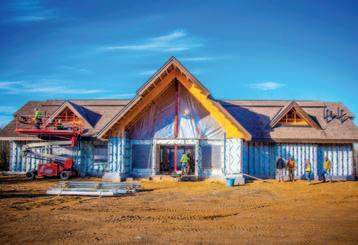
When you arrive in town, eager to hit the trails whether snowmobiling, ATVing, skiing, biking, or hiking, wouldn’t it be nice to have a place to change into your outdoor clothes and use the restroom? And also a convenient spot to park your vehicle and trailer? It’s coming! Work is progressing nicely as of this printing, thanks to good weather for construction this fall in Ely. A project of the Ely Economic Development Authority, it has received funding from the state and IRRR.This is part of the West End Development that EEDA has been planning and giving life to. One more way Ely is flourishing!
And there is work being done to create a less polarized community. The Ely Alliance of Braver Angels holds gatherings and workshops where citizens can have discussions with the goal of understanding one another rather than trying to convince one another to change their minds. In a world where there are not a lot of role models for that type of conversation, it is a challenge to find the way to be what Abraham Lincoln called “our better angels” as he was urging people “We are not enemies, but friends” after the Civil War. Check out the
Facebook page for more information and dates and topics of local meetings, and the national group at braverangels.org.
Here’s one last fun new addition to Ely’s winter outdoor life! Back again is a ski race and evening candlelight ski. Head to Hidden Valley on February 15th for the Ely Nordic Loppet with 10k and 20k races in both skate and classic categories. A shorter Hot Cocoa Cup kids race makes this a family outing day. All races will award 1st through 3rd place. And for more fun, the last race of the day is a casual 5k with a prize for best costume. Food at the chalet and candlelight skiing wrap up the evening. More info at elynordic.org.

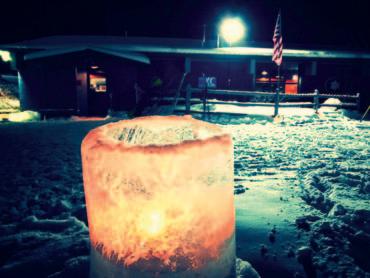

Berean Baptist Church 2281 Hwy 169 365-5413, baptistchurchely.com Sun 10:30
Ely Gospel Church 3 E Allaire St 2351142 Sunday, School 9, Worship 10
In-person and livestreaming on YouTube at their channel, Ely Gospel Church
First Lutheran Church LC MS 915 E Camp St 365-3348 Sun 10:30
First Presbyterian Church 226 E Harvey St 365-5130 Sun 11, YouTube
Grace Lutheran Church ELCA 301 E Conan St 365-5605 Sun 9:30
In-person and livestreaming on FB, archived on YouTube
Ledgerock Comm. Church 1515 E Camp St 365-4890 LedgerockChurch.com Sun 9:30
In-person and livestream on YouTube, audio on web, archives
Oasis Int’l Church 10 W Pattison 235-1151 Sun 10
In-person and livestreaming on FB at Oasis International, midweek service time varies
Praise Fellowship Christian Ely Senior Center 235-9541 Sun Bible study 9, worship 10
St. Anthony’s Catholic Church 231 E Camp St 365-4017 Sat 5 pm, Sun 10
Babbitt, Sun and Wed 8am T 5pm, Th, F 8am
St. Mary’s Episcopal Church 715 S Central Av 409-6870 Sun 9:30
Zoom, ElyStMarys@gmail for link
United Methodist Church of Ely 305 E Camp St 365-3355, elyumc.org Sun 10, FB
In-person and YouTube, ElyUMC1
Recovery - For those dealing with any addiction in friends or family
Sober Squad Talking Circle – St. Mary’s Episcopal Sat, 2pm AlAnon
Ely Willingness AFG – 1st Lutheran Church Wed 7pm
Babbitt AFG – Woodland Presbyterian Thurs 7pm Alcoholics Anonymous
Ely Sunshine Group, open – St. Anthony’s basement Sun 6pm
Women’s Open – Ledgerock Church Mon noon
Miracle on Camp St, open – 1st Lutheran Church Mon 7pm
Primary Purpose Men’s Group - 1st Presbyterian Ely Tues 7pm
Babbitt Tues Night Group, open – Tue 7pm
Ely Wed Night Group, open – 1st Lutheran Church Wed 7:30pm
Lake Vermilion 12X12, open Thu 6:30pm
Immanuel Lutheran Church, Tower
Babbitt Back2Basics, open – Woodland Presb Church, Babbitt Thu 7pm
Happy, Joyous, and Free – First Presbyterian Church Fri 7pm
Ely Saturday Group, open – 1st Lutheran Church Sat 7:30pm

There is a NEW LOCATION for some activities–The Hub. It is at 760 Miners Drive–the former MN Revenue Building. Most locations are shown on the maps on pages 71-74; church addresses are on page 61. Vermilion Theater is on the MN North Vermilion Campus. Area code is 218 unless noted.
19, 1:30 Curiosity Cohort, Napkin Folding for adults
24 - Dec 8 Festival of Trees, Northwoods Partners fundraiser, lighting 7:30pm 11/24
26, 7 pm Brooke Pasmick, pianist concert, local woman, rising star Vermilion Theater 28, 11 or 4 Thanksgiving Potluck, all are welcome, turkey provided, bring side dish or dessert Ely Folk School 29, all day Free Park Day at MN State Parks Bearhead and Lake Vermilion State Parks
30, all day Shop LOCAL Saturday, support Ely’s marvelous retail shops All of Ely

Need uniquely Ely gift ideas? How about sauna supplies from Mealey’s, Crapola and a punny Brainstorm Bakery bumper sticker, hand-made crafts from local artists at the Ely Folk School mercantile, locally brewed craft beer from The Boathouse, Ely earrings from Blue Loon? Browse the rest of the magazine for Ely gifts.


Do you know? Northern Lakes Arts offers pay-what-you-can performances for all plays. Check their website for those dates. “Theater should be for everyone!” Scholarships are available for Reflections Dance Company classes.
All month Spice Kits and Take & Do Craft Kits, free
1-31 Applications Open for Tofte Lake Arts residencies
2, 3 pm
4-10
Gunflint Falling, author Cary Griffith
Sweet Valley High books 1-3 Kahoot!, all ages, online, pre-register
4, 5:30 Medicare 101, free, elyclasses.com
Ely Public Library
TofteLake.org
Ely Public Library
Ely Public Library
School Media Ctr
4, 6 pm Wine Tasting, flight from Justin Wine Vineyards, charcuteries available Society Hall
6-Jan 5 Shine Bright Ely, store windows decorated for evening walk/drive Downtown Ely
6-8, all day Small Town Christmas, SHOP LOCAL! See Ely.org for store specials Downtown Ely
6, 4-7pm
Makers Market, Mixer, and Carols art & craft sale and socializing
6, 5:30 Home Buyer’s Class,free, elyclasses.com
Ely Folk School
School Media Ctr
3rd Wednesdays at the Boathouse 5-5:30



7, 10-2 pm Mrs. Claus kids holiday party Grand Ely Lodge
7, 7 pm Reflections Dance Company Winter Showcase Vermilion Theater
7, 7 pm Holiday Concert, Christmas Cantata “Love is Born” 1st Presbyterian Church
8, 4-7pm Ceramics Studio Open House, give it a try, free
9, 3 pm Friends of the Library Book Club, All Quiet on the Western Front
11, 5-8pm Make Norwegian Lefse
11, 5:30 5 Keys to Retiring Fearlessly, free, elyclasses.org
Ely Folk School
Ely Public Library
Ely Folk School
School Media Ctr
11, 5-7 Braver Angels Social with free appetizers and beer, all are welcome Boathouse upstairs 12-21 Elf, the holiday musical from NLAA, tickets at northernlakesarts.org Vermilion Theater
12-14, 10-3 Scandinavian Christmas, Homemade Gifts, Baked Goods, Conversation Nelimark Homestead, Embarrass
12, 1:30 Curiosity Cohort: Global Holidays, for adults
14-15 Knife Making, Maasepän Puukko, elyfolkschool.org
14, 1-3pm Ice Fishing 101, elyfolkschool.org
Ely Public Library
Ely Folk School
Ely Folk School
14, 3-5 pm Holiday Party by Ely Folk School, FREE food, drinks, games, fun for all ages Semers Park
14, 4-6 pm Coffee & light dinner followed by Finnish Ice Candle Celebration Embarrass Town Hall
19, 4-6 pm Christmas Cookie Swap, free Ely Folk School
18, 2 pm It’s a Holiday: Flake Appreciation Day all ages
Ely Public Library
18, 6 pm Bubbles Wine Tasting, prepare for New Year’s Eve Society Hall
18, 7 pm Middle and High School holiday concert Washington Aud.
19 - 23 Christmas Stories Kahoot, all ages, register
Ely Public Library
19,1:15 pm Elementary school holiday concert Washington Aud
20, midnight Ely Art Walk Artists registration due, C’mon-YOU can do this! ElyArtWalk.org
21, 9-1 Make Slovenian Walnut Potica Ely Folk School
21 or 28, 7pm Alumni Hockey Game check FB Ely Alumni Hockey Ely Ice Arena
27, 1 pm Get Crafty, winter craft stations, all ages
31, 6-8:30pm New Year’s Eve with Ian & Friends, tickets at northernlakesarts.org
©Ely Winter Festival
Ely Public Library
Ely State Theater


Jan & Feb Ely Youth Ski League, Times tba, ages 4-11, eysl@elynordic.org to register Hidden Valley
3, 4 pm
Jigsaw Puzzle Swap, all ages, bring some and take some
Ely Public Library 4, all day
4, 10-12
7, 10:30 am
7, 6 pm
Isabella Christmas Bird Count, post-count lasagna, 218-323-7633
Tracking Animals in the Snow, register, also Jan 11 and 18
Singer Songwriter Dennis Warner, concert for adults
Braver Angels Gathering, all are welcome, see FB page for topic
Isabella area & CC
Ely Folk School
Ely Public Library
Ely Senior Center 8, 6 pm
10
Wine Tasting, tickets at thenortherngrounds.com/online-store/Wine-Tasting Society Hall
Last day to apply for an amateur snow carving block
ElyWinterFestival.com 10-11
Dark Sky Festival, ely.org/darkskyfest for special programs, sauna, trivia, + Ely area 10-26
Great Nordic Shakespeare Festival, performances and workshops VermilionTheater 10-26 Romeo and Juliet, tickets at northernlakesarts.org Vermilion Theater
10, 3-5 pm Astronomy Science Stations, all ages, young children may need help
Ely Public Library 11, 7-9 pm
Kicksled around the Trezona, free kicksled use
Ely Bike and Kicksled 11 & 25, 12-3:30 Shakespeare Workshops, no acting experience needed, northernlakesart.org Vermilion Th. 13 Spring Semester starts MN North Vermilion
16-2/2
16, 6-8 pm
22, 6 pm
23, 3 pm
Every Brilliant Thing, an uplifting and interactive show, northernlakesarts.org Vermilion Theater
Curiosity Cohort, Roleplaying Games for adults, Intro to D&D
Ely Public Library
Wine Tasting, tickets at thenortherngrounds.com/online-store/Wine-Tasting Society Hall
Library Scientists, Invisible Ink, all ages
Ely Public Library
25, 9:30am Ely Invite high school ski races, Hidden Valley
25, 1-4 pm Harry Potter Event, grades 9-12 and adults
26-28
Ely Public Library
Auditions for Spring Musical Matilda, lots of kids parts, northernlakesarts.org Vermilion Theater
30, 1 pm Get Crafty, Diamond Dots, for adults
30, 6 pm
Braver Angels Gathering, all are welcome, see FB page for topic
Ely Public Library
Ely Senior Center
31, 2-4pm Visual Arts Workshop by Tofte Lake Center, info@toftelake.org Camp DuNord

1-28
1, all day
1, 10-12
1, 2-4
1, 2-5
Ely Art Walk, free guide at Northern Grounds, Art&Soul, and Folk School Downtown Ely
Fun Run Snowmobile Ride, money raised goes for trail grooming, 365-3141 Ely, Babbitt, Tower
Playwrighting Workshop by Tofte Lake Center, info@toftelake.org Camp DuNord
Dance Workshop by Tofte Lake Center, info@toftelake.org
Snow sculpting - learn how, dress to be outside
3, TBA Curiosity Cohort, adults, topic TBA, register
5, 6 pm
6-16
Camp DuNord
Ely Folk School
Ely Public Library
Wine Tasting, tickets at thenortherngrounds.com/online-store/Wine-Tasting Society Hall
Get a complete schedule for Ely Winter Festival events online or in brochures around
Ely Winter Festival & Snow Sculpting Symposium, ElyWinterFestival.com
7, 4-7 pm
8, 10-1
8, 11-2
8, 10-2
6-9
7, 4-6 pm
7-8
7-8
7-9
7, 14, 15
8-9
13, 5:30
14, 1 pm
Spaghetti Dinner, ECR fundraiser, all-you-can-eat
Open House and campus tours
Ely Area
Catholic Church basement
“Whirlwind” community event, fun winter activities for all ages, free Dorothy Molter Museum
Fat tire and Kicksled demos and trials, free Whiteside Park
Amateur Snow Carving Contest, see ElyWinterFestival.com by 1/10 for a block Whiteside Park
Ely Art Walk opening celebration, meet the artists, refreshments
Friends of the Library Book Sale, 10-5
Great Nordic Beard Festival, live music
Taste of Blacksmithing, four 2-hour sessions, take one or all, elyfolkschool.org
Special Winter Opening, 10-4
Howler Jamboree Mini and Mite hockey tournament, elyhockey.org
Dorothy Molter Museum fundraiser, tickets at RootBeerLady.com
Board Games for all ages
Ely Folk School
Ely Senior Center
Ely State Theater
Ely Folk School
Dorothy Molter Museum
Ely Ice Arena
Grand Ely Lodge
Ely Public Library
15, 10am Ely Nordic Loppet, register at Hidden Valley 14-17
Great Backyard Bird Count, BirdCount.org/gbbc or see Ely Field Naturalists
Ely and USA 15-16
15, 9-4
Wolves After Dark, overnight for ages 12 and up, register at wolf.org
Make a Beaver Fur Hat, register
18, 3 pm It’s a Holiday, National Engineers Week, all ages
18, 6 pm

Int’l Wolf Center
Ely Folk School
Ely Public Library
Braver Angels Gathering, all are welcome, see FB page for topic and location MN North Room 109
Ely Rec. Center - Mon-Fri 3-8, Saturdays 12-8, Sundays 1-6pm Ely Ice Rink by the school - TBD, check ElyClasses.com Whiteside Park during Winter Festival, weather permitting

Irregularly Ely Braver Angels Gatherings and Special Events see Ely Alliance Braver Angels Facebook Monthly Craft kits and spice packets to take home, available all month Ely Public Library
Mon, Wed, Fri Indoor Walking, all ages 10-11am Senior Center Mon-Thur Open Swimming, 9am-9pm, bring your own towel, 365-6565 Grand Ely Lodge Mon, Wed, Fri Indoor Pickleball, 7-10am, ElyClasses.com MN North Gym Mondays Women’s Memories & Movement Group, 10-11am The Hub Mondays Schmear, 6pm, all ages Senior Center
1st Mondays Community Game Night, 6:30pm, bring a game if you wish Ely Folk School
2nd Mondays Friends of the Library Book Club, 3 pm Ely Public Library Tuesdays Chair Yoga, 9-10am The Hub
Tuesdays (Jan-Nov) Tuesday Group, educational speakers, noon, ElyTuesdayGroup@gmail.com
GEL&Zoom
2nd Tuesdays Ely Climate Change Group, 4 pm, all welcome EFN Resource Center
3rd Tuesdays Caregivers Support Group, 11-12 The Hub
3rd Tuesdays Tasty Tuesday cooking class 2-3:30, register 218-365-8019 The Hub Wednesdays Men’s Memories & Movement Group, 10-11:30am The Hub
Wednesdays BINGO, 1-4pm, no need to be a senior Senior Center
Wednesdays Bridge 12pm, all welcome Senior Center
Wednesdays Ping-Pong, 6pm Senior Center
Wednesdays Game night, 6:30, check Ely Board Gamers on FB Location Varies Wednesdays Open Mic, 6 pm, everyone welcome Boathouse
Wednesdays Women’s Basketball, 7-9pm, ElyClasses.com, Register in advance HS Big Gym Wednesdays Coed Volleyball for experienced players, 7-9pm ElyClasses.com, Register in advance HS New Gym
1st Wednesdays Potluck, 11:30. Sign up to bring a dish or pay $5. All are welcome. Senior Ctr
1st&3rd Wednesdays Wellness Wednesday, BP checks and other activities, 11-noon Senior Crt
2nd Wednesdays Cancer Support Group, 6pm Senior Ctr
3rd Wednesdays Food Shelf open 11am - 5pm, elyareafoodshelf.org
15 W. Conan
3rd Wednesdays History Happy Hour, 5-5:30 Boathouse upstairs Thursdays Makers Mornings, work on projects in community, free, 9:30am-12:30 Ely Folk School Thursdays Community Exercise, all are welcome 10:30 First Lutheran Church Thursdays Conversational Finnish, all welcome, 1-3pm Embarrass Town Hall
Thursdays Ely Free Clinic, 5:30-7, elycommunityhealth.org Ely Community Health Center
1st Thursday Call of the Wild Poetry night, 5 pm, NorthernLakesArts.org Ely Folk School
1st Thursday Ely Area Writers’ Group, 6 pm, 235-1984 Ely Folk School
2nd Thursday Trivia Night, 6:30-8:30, benefits Ely non-profits Boathouse upstairs
4th Thursday Heart of the Woods Quilters, 6:30 pm, 365-4907 Ledgerock Church basement
Fridays Pre-school Storytime, 10:30am Ely Public Library
Saturdays What’s for Dinner? 7pm, 365-4695 pre-register not 11/30, 12/21 Int’l Wolf Center
1st Saturday Pancake Breakfast, Oct-May, 8-11 am Embarrass Timber Hall
3rd or 4th Saturday Food Shelf open 8 - 11am, elyareafoodshelf.org
15 W. Conan
See church services in Spiritual Gatherings, page 61. Events at the school will be cancelled when school is closed.
Classes are 45-60 minutes. Check for descriptions and schedules: EndoftheRoad.yoga 235-7294
HMSFunctionalFitness.com 235-0835 text StudioNorthElyMN.com 365-2493
Cost is $12-15 with discounts for membership or multiple classes. See locations on the maps inside the back cover. Free Senior classes - NorthwoodsPartners.org 365-8019
19, 6 pm
Wine Tasting, tickets at thenortherngrounds.com/online-store/Wine-Tasting Society Hall
20, midnight Dogsled to Dorothy’s 2/27-3/2, last day to register, rootbeerlady.org Knife Lake
21, TBA Wolf Track Prance, live music and door prizes Grand Ely Lodge
22, 6:45
22-23
Teen Breakout Boxes, like escape rooms but smaller, grades 5-8
WolfTrack Classic Sled Dog Race, WolfTrackClassic.com
Ely Public Library
Ely area
TBA Wolftrack Welcome Party, bonfire, beverages, games, volunteers and spectators Timber Trail Lodge
22, 4-7pm Meet the Teams at Vet checks Mn North Vermilion 25, 10:30 Move and Groove for pre-schoolers (with an adult)
26, 2 pm Get Crafty, Sticker by Number, all ages
Ely Public Library
Ely Public Library
22, 4-7pm Wolf Track Spaghetti Dinner, all-you-can-eat, Wilderness Club fundraiser Vermilion Cafeteria 23, 9am WolfTrack Classic Sled Dog Race Starts Ely Softball Complex
6, TBA Curiosity Cohort, topic TBA
Ely Public Library 7-9
Wolves and Women’’s Weekend, ages 21+, register at wolf.org
Int’l Wolf Center 5-26
12, 6 pm
13, 3 pm
13-16
22, 1:30-4
Gardner Trust Spring grants cycle open, for individual artists and organizations GardnerTrust.org
Wine Tasting, tickets at thenortherngrounds.com/online-store/Wine-Tasting Society Hall
Library Scientists, Magnets, for all ages
Ely Public Library
Ely Film Festival, featuring Arrowhead and international independent films Ely State Theater
Murder Mystery Event, adults and grades 9-12
22, 5 pm ECR Art Auction Fundraiser with appetizer buffet
Ely Public Library
Ely State Theater


25, 10:30 Move and Groove for pre-schoolers (with an adult)
Ely Public Library
26, 6 pm Wine Tasting, tickets at thenortherngrounds.com/online-store/Wine-Tasting Society Hall 27-4/6 Spring Musical, Matilda, tickets at northernlakesarts.org
27, 1 pm Get Crafty - Adult Coloring
Apr 1 Registration opens for Youth Arts Summer Programs
Apr 3 It’s a Holiday - World Party Day, for all ages
Vermilion Theater
Ely Public Library
NorthernLakesArts.org
Ely Public Library
Apr 17, TBA Curiosity Cohort, topic TBA Ely Public Library
Apr 22 We Are Water Exhibit thru 6/16
Apr 23, 2pm Get Crafty - Spring Craft Stations, for all ages
April 27, 4pm 100+ Women Who Care, fundraising for Ely non-profits
Apr 29, 10:30am Move and Groove for pre-schoolers (with an adult)
May 8, 7pm Reflections Dance Company Spring Showcase, Water II
May 10 Minnesota Fishing Opener, the REAL end of winter whatever the weather
Ely Folk School
Ely Public Library
Ely Senior Center
Ely Public Library
VermilionTheater
Ely Area Lake
May 16 Last day to register for Women’s BWCA trip to Dorothy’s, 6/16-20, RootBeerLady.com Knife Lake
May 10, 11:30-2 Introduction to Book Binding
May 14, 2 pm Library Scientists, Bubbles, all ages
Ely Folk School
Ely Public Library
May 14, 7pm Commencement for MN North Vermilion Vermilion gym
May 20, 1:30 Get Craft - Puzzle Piece Wall, for adults
Ely Public Library
May 17, 8-4 City-wide Rummage Sale, Clean out your closets! Ely Chamber of Commerce 365-6123 Ely Area
May 17 Studio North Dance Recital,1pm and 5:30pm Washington Auditorium




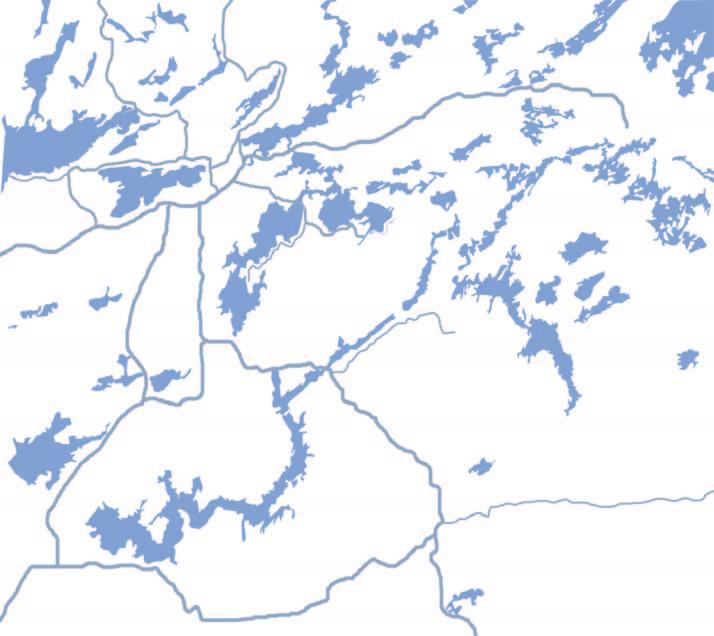

The Boundary Waters has inspired generations of Americans to cherish the outdoors and value its clean waters and forests. This unique Wilderness offers world-class recreation, critical habitat, and supports the people and economies of wilderness-edge communities. However, this precious landscape is at risk from toxic sul昀de-ore copper mining.
Join Save the Boundary Waters in protecting this cherished area for everyone to enjoy, now and for future generations.
Check our website for more information on where and when to 昀nd us: savetheboundarywaters.org/ely-headquarters 16 N 1st Ave E, Ely, MN 55731

JANISCH REALTY is a small, local company who has worked diligently to become a WATERFRONT MARKET LEADER 12 YEARS IN A ROW!
Local Professional Expertise | Global Network Unrivaled Personal Service | Ethics Committee Member
FOR BUYERS:
• Reliable Competent Advice
• Knowledge of the area
• Insight into market trends
• Pro昀cient in construc琀on techniques
• Exper琀se in real estate nego琀a琀ons
We listen to our clients and make 昀nding the right property a straight-forward, transparent experience.
FOR SELLERS:
• Unparalleled Exposure
• Access to our global network of poten琀al buyers
• Aggressive marke琀ng
• Professional & aerial photography, online 3D virtual tours
• Use of cu�ng edge technology
We serve as trusted advisors from the lis琀ng and marke琀ng stage through the nego琀a琀ng and closing process.
It would be an honor to have the opportunity to work with you! Give us a call or send us an email and let’s get started TODAY!








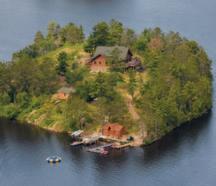

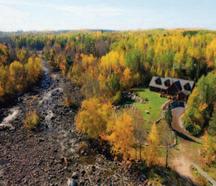



November 1 through May 31 Park on the North or West side on odd numbered days, the South or East side on even numbered days. You may park on the next day’s side after 6pm.
Snowmobile trail maps are free at many businesses and the Chamber of Commerce. For snowmobile events and trail conditions see the Ely Igloo Facebook page.
Ski and snowshoe trail maps are available at Piragis Northwoods Co. and the Forest Service. For more area XC skiing and mountain biking info see ElyNordic.org.



Clear Lake Retreat

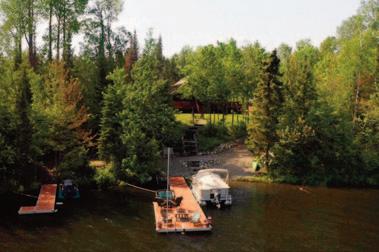

OFFERED AT $1,150,000 DETAILS 3 BED / 2 BATH 2,335 SF 8.3 ACRES 805 FT SHORELINE
Secluded hand hewn log home on Clear Lake near Ely & the BWCA! E & S facing shore adjoining hundreds of acres of undeveloped state land & thousands of feet of state shore. Gradual lot w/excellent swimming & mesmerizing views. Custom built 2007. Vaulted great rm, hardwd 昀r, glass doors to lakefront deck. Gourmet kitch w/island, 2 main 昀r BRs & BTH, upstairs loft. 3 car heated gar w/potential guest quarters above, sauna, 2 docks, boat launch.



